Recent Fire Damage Posts
Small Fire - Big Damage
5/2/2024 (Permalink)
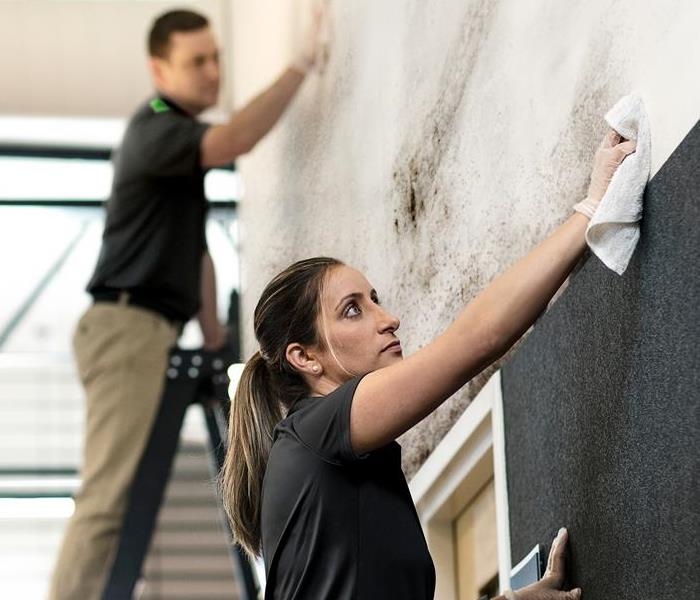 We have the tools and resources available to help you!
We have the tools and resources available to help you!
Cambridge Fire Damage Restoration Available 24/7
While a small flare-up in a Cambridge home may only leave light soot and soils, these can prove challenging to address with consumer-grade cleaning solutions. Even worse, attempting to clean these deposits can spread stains and soot particles. Even when it seems like the damage should be minimal, fire and smoke damage can seep into nooks and crannies, finishes, and HVAC systems with relative ease.
SERVPRO fire damage technicians help Cambridge properties return to a clean, odor-free condition after a disaster. This crew remediates debris, stains, and odors with industrial-grade tools to restoration industry standards, whether the source is a small kitchen fire or a large-scale conflagration.
Why is Professional Cleanup for Fire Damage Necessary?
Fire restoration companies are necessary for multiple reasons:
- Technicians complete training from the IICRC and SERVPRO to understand the intricacies of fire damage, including how soot particles spread and react to various materials and stimuli. This understanding allows them to remove fire damage more effectively.
- Professionals like those at SERVPRO can also render emergency services like packouts, debris removal, and board-ups for damaged windows and doors. Roof tarping services are also available for homes with damaged roofing
- Restoration professionals can help homeowners with their insurance claims by providing such evidence as a photo or video documentation of damaged items, detailed inventory lists, and cost estimates for necessary repairs related to the disaster in question
If a small flare-up occurs, douse it with an extinguisher, baking soda, or salt. Water is not recommended for fires involving oils or fats because it can spread flames. Fires can spread quickly and cause thousands of dollars of damage within just a few minutes. If the disaster proves too large to handle, focus on ensuring home occupants are safe and call emergency services to control the flames. Before an emergency occurs, consider putting necessary paperwork, including insurance information, somewhere easy to reach safely before exiting the property.
After the fire has been addressed, homeowners should contact insurers immediately to start the claims filing process. It is typically unnecessary to wait to begin repairs until an adjuster has evaluated the property, which means homeowners can contact restoration specialists like SERVPRO to inspect and give estimates for cleanup. Depending on the scale of the damage, homeowners may be able to stay at the property. However, insurance may cover hotel accommodations for large-scale damages depending on the policy's terms.
SERVPRO Fire Cleanup Tools Remove Smoke Stains and Odors
Fire and smoke damage restoration by SERVPRO is available for small and large disasters alike, 24 hours a day. This responsiveness minimizes potential damage to structures and contents and can save homeowners significantly on repair and replacement expenses.
Cleanup services may include the following:
- Manual cleanup of lighter, dry soils with dry cleaning sponges, agitation tools, dust cloths, or gentle EPA-registered detergents
- Heavy-duty cleaning with such methods as immersion, abrasion blasting, or ultrasonic cleaners
- Thermal fogging releases dry solvents in a cloud of thick smoke to chemically bind to and eliminate odor-causing particles
SERVPRO can also perform water damage mitigation for homes that require emergency fire suppression. This mitigation process protects the property from potential mold growth and corrosion caused by corrosive soot exposed to water. After cleanup is finished, this crew can also perform necessary rebuilding and move-back services for structures and contents.
Residents can contact the SERVPRO of Cambridge / Belmont team at (617) 864-7378. Our commitment to cleanup ensures that homes are successfully restored in full, "Like it never even happened."
Why Even Small Fires Benefit from SERVPRO Restoration
4/13/2023 (Permalink)
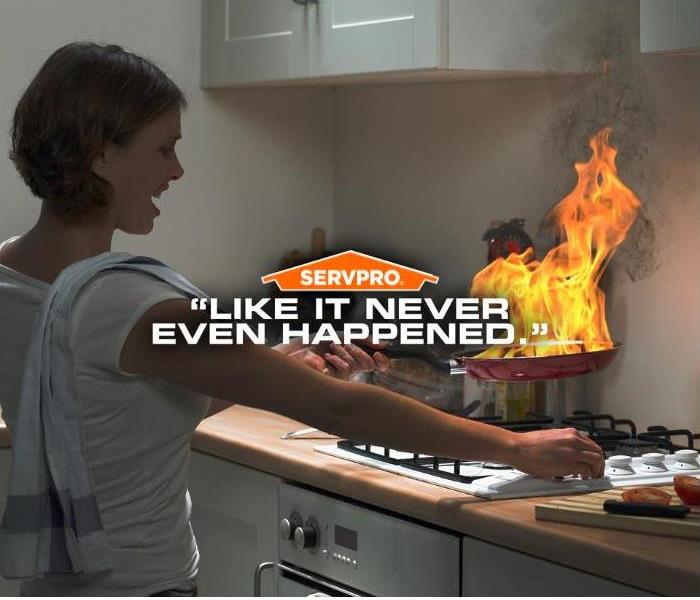 Regardless of the cause, SERVPRO is here for you if your Cambridge home sustains fire damage.
Regardless of the cause, SERVPRO is here for you if your Cambridge home sustains fire damage.
Cambridge Fire Damage Restoration Available 24/7
While a small flare-up in a Cambridge home may only leave light soot and soils, these can prove challenging to address with consumer-grade cleaning solutions. Even worse, attempting to clean these deposits can spread stains and soot particles. Even when it seems like the damage should be minimal, fire and smoke damage can seep into nooks and crannies, finishes, and HVAC systems with relative ease.
SERVPRO fire damage technicians help Cambridge properties return to a clean, odor-free condition after a disaster. This crew remediates debris, stains, and odors with industrial-grade tools to restoration industry standards, whether the source is a small kitchen fire or a large-scale conflagration.
Why is Professional Cleanup for Fire Damage Necessary?
Fire restoration companies are necessary for multiple reasons:
- Technicians complete training from the IICRC and SERVPRO to understand the intricacies of fire damage, including how soot particles spread and react to various materials and stimuli. This understanding allows them to remove fire damage more effectively.
- Professionals like those at SERVPRO can also render emergency services like packouts, debris removal, and board-ups for damaged windows and doors. Roof tarping services are also available for homes with damaged roofing
- Restoration professionals can help homeowners with their insurance claims by providing such evidence as a photo or video documentation of damaged items, detailed inventory lists, and cost estimates for necessary repairs related to the disaster in question
If a small flare-up occurs, douse it with an extinguisher, baking soda, or salt. Water is not recommended for fires involving oils or fats because it can spread flames. Fires can spread quickly and cause thousands of dollars of damage within just a few minutes. If the disaster proves too large to handle, focus on ensuring home occupants are safe and call emergency services to control the flames. Before an emergency occurs, consider putting necessary paperwork, including insurance information, somewhere easy to reach safely before exiting the property.
After the fire has been addressed, homeowners should contact insurers immediately to start the claims filing process. It is typically unnecessary to wait to begin repairs until an adjuster has evaluated the property, which means homeowners can contact restoration specialists like SERVPRO to inspect and give estimates for cleanup. Depending on the scale of the damage, homeowners may be able to stay at the property. However, insurance may cover hotel accommodations for large-scale damages depending on the policy's terms.
SERVPRO Fire Cleanup Tools Remove Smoke Stains and Odors
Fire and smoke damage restoration by SERVPRO is available for small and large disasters alike, 24 hours a day. This responsiveness minimizes potential damage to structures and contents and can save homeowners significantly on repair and replacement expenses.
Cleanup services may include the following:
- Manual cleanup of lighter, dry soils with dry cleaning sponges, agitation tools, dust cloths, or gentle EPA-registered detergents
- Heavy-duty cleaning with such methods as immersion, abrasion blasting, or ultrasonic cleaners
- Thermal fogging releases dry solvents in a cloud of thick smoke to chemically bind to and eliminate odor-causing particles
SERVPRO can also perform water damage mitigation for homes that require emergency fire suppression. This mitigation process protects the property from potential mold growth and corrosion caused by corrosive soot exposed to water. After cleanup is finished, this crew can also perform necessary rebuilding and move-back services for structures and contents.
Residents can contact the SERVPRO of Cambridge / Belmont team at (617) 864-7378. Our commitment to cleanup ensures that homes are successfully restored in full, "Like it never even happened."
Emergency Board-up And Containment Services During Fire Damage Restoration in Cambridge
3/14/2023 (Permalink)
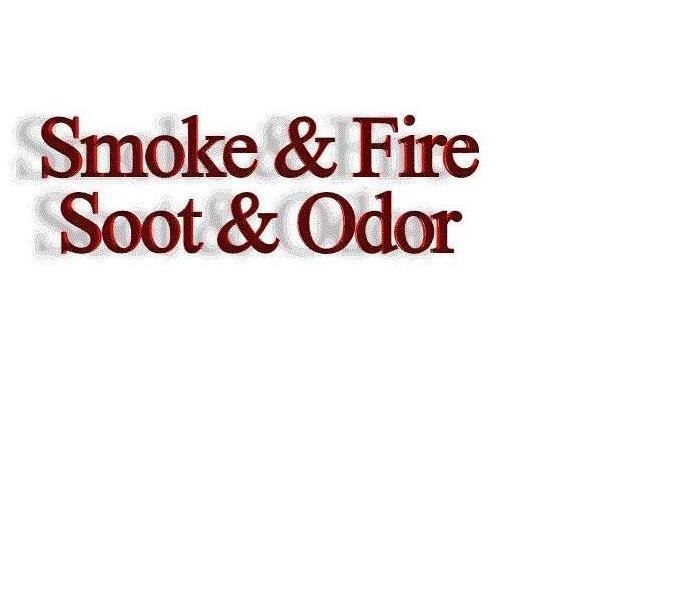 Our techs are ready 24/7, 365 days a year.
Our techs are ready 24/7, 365 days a year.
SERVPRO Secures Your Cambridge Property During Fire Damage Cleanup
Immediate fire damage restoration services are crucial to limiting the resulting financial and emotional challenges. Such incidents usually happen quickly, and it is hard to see your prized assets being consumed by the fire. But, by instantly calling a fire damage company, you may salvage some of your items and prevent further damage.
When you need fire damage cleanup services in Cambridge, you can call our SERVPRO technicians at any time of the day. We understand the importance of ensuring the site is safe and well-preserved before the restoration process starts. We employ appropriate emergency board-up and site containment measures to achieve such goals.
We do emergency board-up to secure properties after fire damage incidents. We cover doors, windows, and other openings to prevent weather damage and unauthorized access. Our team has the necessary experience and equipment for successful emergency board-up services. You can expect us to do the following:
- We may use plywood sheets, polycarbonate materials, and metal sheets to cover openings.
- We may use sealants to seal off gaps left when the board-up materials were put in position.
- Our SERVPRO technicians may place barriers around the property's perimeter to provide additional protection
- We use screws and nails to attach the board-up materials.
- We wear Personal Protective Equipment to lower the chances of exposure to smoke contaminants.
- Portable lighting may be installed around the building.
We do site containment to ensure the smoke particles do not spread to the surrounding uncontaminated areas. It is an important step, particularly when fire damage happens in certain sections and others remain unaffected. Some tools and techniques used during emergency board-up are also used during this step.
SERVPRO of Cambridge/Belmont offers professional fire damage remediation services to reinstate your property to its former condition quickly. Call (617) 864-7378 to work with a licensed team that is Faster to Any Size Disaster.
Does SERVPRO Ventilate During Fire Restoration in Cambridge?
9/13/2022 (Permalink)
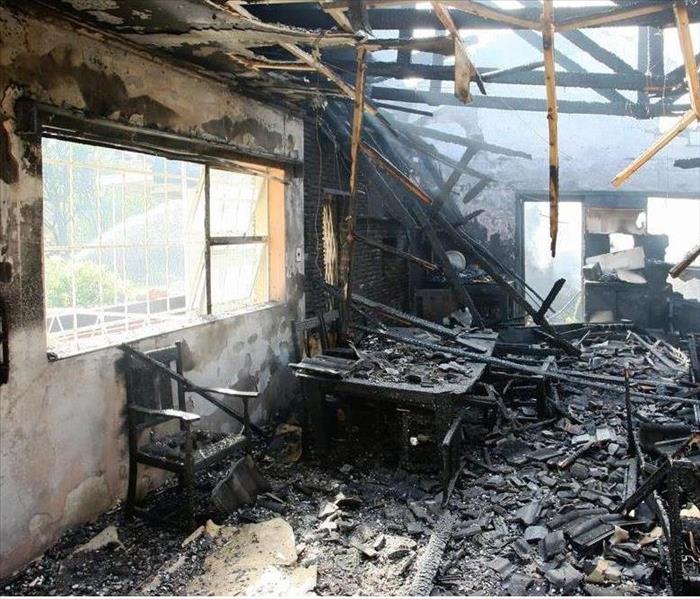 Call SERVPRO of Cambridge / Belmont at (617) 864-7378 for assistance from a professional remediation company.
Call SERVPRO of Cambridge / Belmont at (617) 864-7378 for assistance from a professional remediation company.
SERVPRO Fire Restoration Helps Cambridge Clients Avoid Airborne Smoke Residues
Many of our clients in Cambridge want to immediately enter their homes or buildings to recover family heirlooms and other valuable items after a fire. Some will ignore the guidance of the fire department to wait until the fire is completely out and the space has been thoroughly ventilated. There is real danger lurking inside your home. Among the hazards are slips and falls, live electrical wires, weakened support structures, and airborne smoke residues containing many toxic compounds.
SERVPRO provides fire restoration services to our clients in Cambridge and the surrounding area. We are very conscious of potential hazards, and our technicians ensure that the space is well ventilated, we turn the electrical system off, and structures are not in danger of collapsing. We ensure the area is safe for our team to enter. We can look for essential items and recover them before cleaning and restoration begin.
Ventilation is vital. Air movers remove nitrogen produced by burning organic materials and sulfur from burned inorganic materials. These chemicals are hydrocarbons, are quite toxic, and have been linked with cancer diagnoses. In addition, carbon monoxide, hydrogen cyanide, and hydrogen chloride are also produced.
SERVPRO ventilates the space, removing most of the gasses emitted from debris. We remove all fire-damaged contents and structures and clean every surface to remove smoke residue from your home. SERVPRO can also assist with restoring and repairing your home after a fire in your home after we remove all smoke residues.
Our SERVPRO services include:
- Smoke damage cleaning and remediation
- Fire damage restoration
- House fire cleanup, repair, and restoration
Call SERVPRO of Cambridge / Belmont for fire restoration services. We provide service to Cambridge and nearby areas. We can help 24/7. Call (617) 864-7378.
Fire Damage Restoration Variables in Belton Homes
8/11/2022 (Permalink)
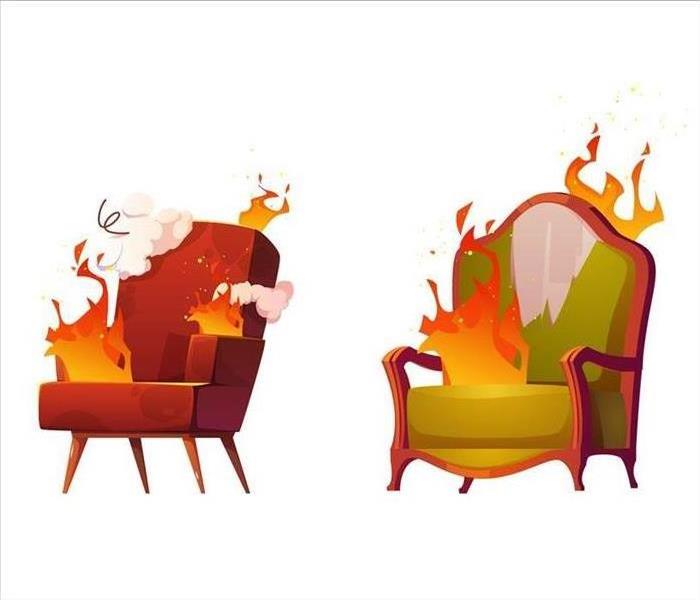 Fire damage restoration services by SERVPRO are second to none. Call now!
Fire damage restoration services by SERVPRO are second to none. Call now!
Belmont Fire Damage Cleanup with SERVPRO - What to Expect
If your Belmont home catches fire, you face the challenging task of fire damage restoration. Despite the traumatic experience, you must act fast to prevent further destruction. Any delay could worsen material deterioration.
Before embarking on fire damage restoration processes in Belmont properties, it is highly recommended that you inform your insurance provider. That way, the initial claim can readily cover all the damages. Having to deal with insurance companies can be nerve-wracking at times. SERVPRO helps smooth the process by working directly with adjusters. Our teams inspect the damages and help you clean your property to its former state.
Areas to be inspected include:
- Roof
- Plumbing and heating
- Interior walls and framing
- Windows
A fire causes an array of issues on the onset. Soot settles quickly into items and surfaces, and if it is wet soot, it damages textured and porous materials significantly. When combined with water, it forms a corrosive solution that can damage metal objects. It also increases conductivity, thus the risk of shorts in electronics which may leave some items irreparable. Smoke also causes a putrid smell that needs professional intervention.
Only a trained person should enter a fire scene because fire damage is unpredictable and may pose particular risks that only professionals can identify. Therefore safety should be a priority even after the fire is out. There are also specialized equipment and techniques necessary for cleanup that only professionals can perform effectively.
Cleaning and deodorizing textiles
Unfortunately, not every item can be saved; however, for small fires, SERVPRO crews help restore surfaces and eliminate the smoke odor. We also assist with more challenging things, especially carpets and upholstery. Special care is needed when cleaning and deodorizing textiles.
Textile restoration may involve:
- Performing several wash cycles
- Using specialized cleaning products to prevent yellowing
- Expediting drying to avoid bad odor
SERVPRO of Cambridge / Belmont has experience in fire damage restoration and thus helps manage and complete the most difficult or dangerous cleanup processes. Call us at (617) 864-7378. We're Faster To Any Size Disaster.
SERVPRO Cleans Up Even the Worst Fire Damage in Cambridge
6/15/2022 (Permalink)
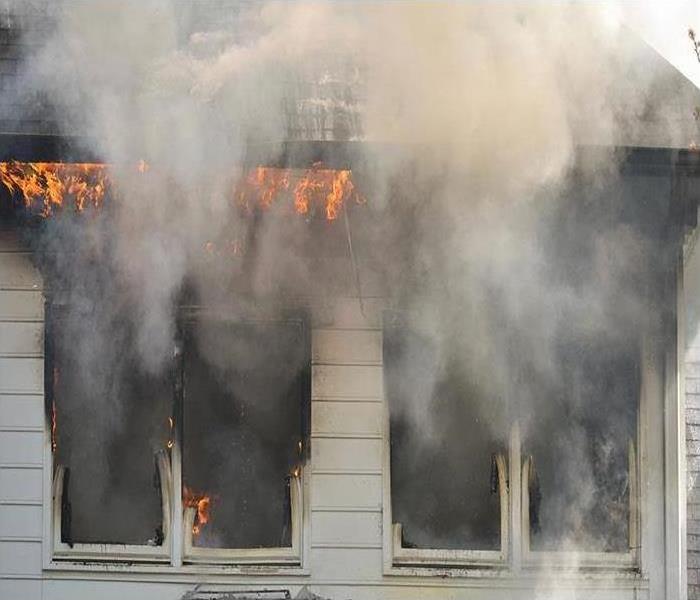 Smoke and soot are difficult to remove. Call SERVPRO!
Smoke and soot are difficult to remove. Call SERVPRO!
Our Cambridge Crews Are Expert Fire Damage Erasers
The first thing on the minds of Cambridge homeowners impacted by fire is how quickly they can return their residence to its pre-fire state. Of course, this work is usually easier said than done since the fire and smoke damage can often be extensive. With that said, there are local services that can effectively clean up and restore burned homes.
In Cambridge, SERVPRO’s fire damage team routinely remediates the effects of fire-related issues. Therefore, we have deftly dealt with all of the typical problems involved in restoring fire-damaged homes. On countless occasions, our expert crews have performed thorough house fire cleanup projects, completed smoke remediation efforts, and conducted complex fire damage restoration work. The methods and equipment we have used include:
- Locating and removing acidic fire/smoke residues from interior surfaces using innovative abrasive, wet, or dry methods to prevent discoloration and other damage
- Employing state-of-the-art HVAC cleaning systems to eliminate smoke particles from ductwork that could otherwise spread throughout your residence and foul other areas
- Refreshing the interior environment by pushing smoky air out with high-velocity box fans and air movers
- Removing or neutralizing airborne smoke particles with cutting-edge air scrubbers and ozone machines
- Eliminating persistent, undesirable smells from your home with powerful ultra-low volume and thermal foggers that emit commercial-grade deodorants to treat impacted areas/surfaces
Treating odorous, fire-damaged furniture and other upholstered contents with advanced injection devices
Once SERVPRO has taken all these steps, homes have generally been fully remediated, and residents are almost always amazed by the results. Moreover, homeowners are usually ecstatic about how swiftly we can return residences to their pre-fire state.
So, with this in mind, contact SERVPRO of Cambridge/Belmont whenever you need fire damage remediated. We are always ready to assist you at (617) 864-7378.
SERVPRO Fire Restoration Mitigates Soot and Proteins
5/22/2022 (Permalink)
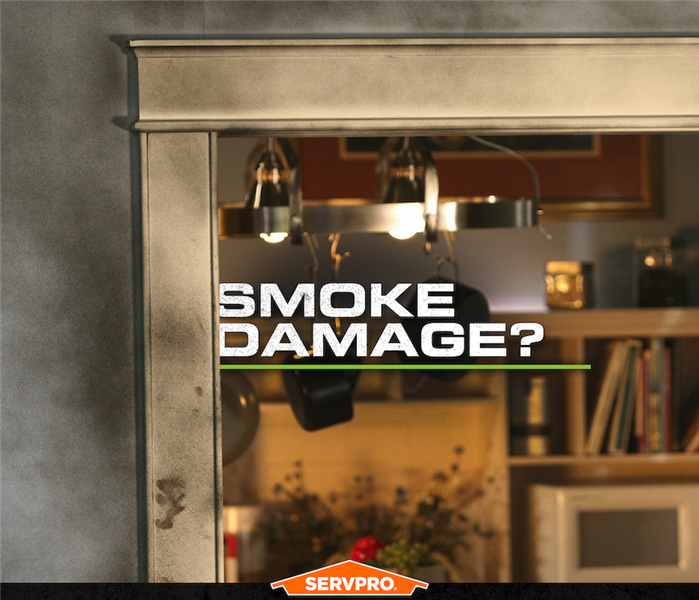 Fire damage restoration services by SERVPRO are second to none. We are ready 24/7 365 days a year.
Fire damage restoration services by SERVPRO are second to none. We are ready 24/7 365 days a year.
Professional Fire Cleanup for Cambridge Kitchens
Kitchens are by far the most common source of fire damage restoration in Cambridge, accounting for as many as half of reported cases and nearly half of estimated unreported incidents. High temperatures and smoke create chemical changes that can contaminate food while spreading soot particles and other soils throughout nooks and crannies in a Cambridge property.
SERVPRO fire restoration technicians respond to calls 24 hours a day, seven days a week, to mitigate soils and restore structures and belongings. Cleanup services address soot, protein residues, and fire-related odors. They include HVAC inspections to minimize the risk of spreading smoke particles during cleanup.
Mitigating Fire Soils and Proteins with SERVPRO Solutions
Fire damage soils, especially those from "wet" smoke associated with oils and plastics, are difficult for homeowners to remediate. SERVPRO has a multitude of solutions for these soils, as well as the filmy, odorous residues left behind by burnt proteins such as meat and fish:
- Enzyme digesters consume protein residues and convert them into the water-soluble matter for simultaneous cleaning and deodorizing
- Specialized detergents that are either hydrophilic or lipophilic can target soils for successful emulsification of wet smoke
- EPA-registered, OSHA-approved solvents are usable for soils that are more difficult to clean and also provide odor control when dispensed through a thermal fogger
- Light, dry soils on kitchen walls and fixtures are often removable with light detergents or manual cleaning agents like dry cleaning sponges
- Metals and appliances are also often restorable after enduring fire damage
Residents can call SERVPRO of Cambridge / Belmont at (617) 864-7378. We're Faster To Any Size Disaster and serve the community with emergency-response inspection and restoration services.
Overloaded Circuits Cause Fires
3/17/2022 (Permalink)
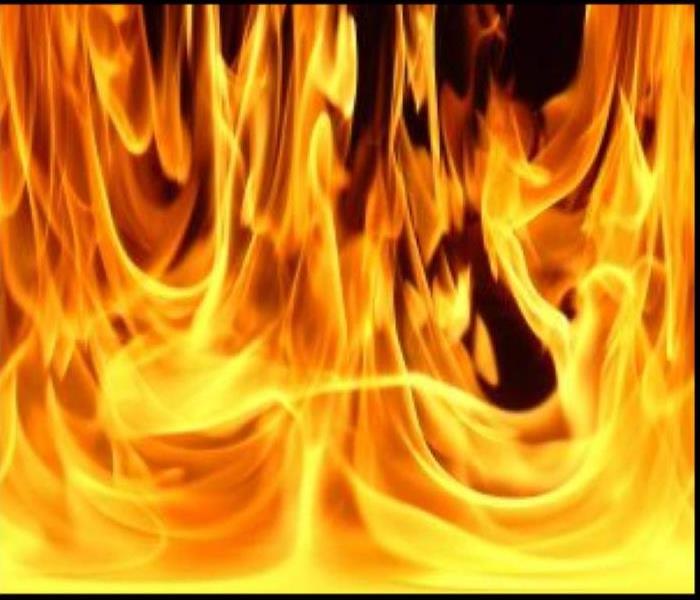 Over loaded circuits' are dangerous - no matter where you are
Over loaded circuits' are dangerous - no matter where you are
Overloaded circuits are one of the leading cause of fires in homes. It can be as simple as an overloaded outlet! There is too much energy which the conductor does not have the capacity to disperse. The energy build up converts to heat. The heat build up with the static from the electricity cause fire to ignite.
If a fire starts in your home due to an overloaded circuit do not try to handle the fire on your own as you can risk electrocution. Instead, call 911 and get yourself and your family to a safe place. Once the fire has been put out call your insurance company and a remediation company like us to help get your home back to pre loss condition.
We are always here to help in the event of a fire in your home or commercial space. We offer local support and expertise 24/7 to ensure you are taken care of! Give SERVPRO Cambridge/Belmont a call at 617- 864-7378.
The Fire Tetrahedron & Why It’s Important | SERVPRO® of Cambridge/Belmont
1/17/2022 (Permalink)
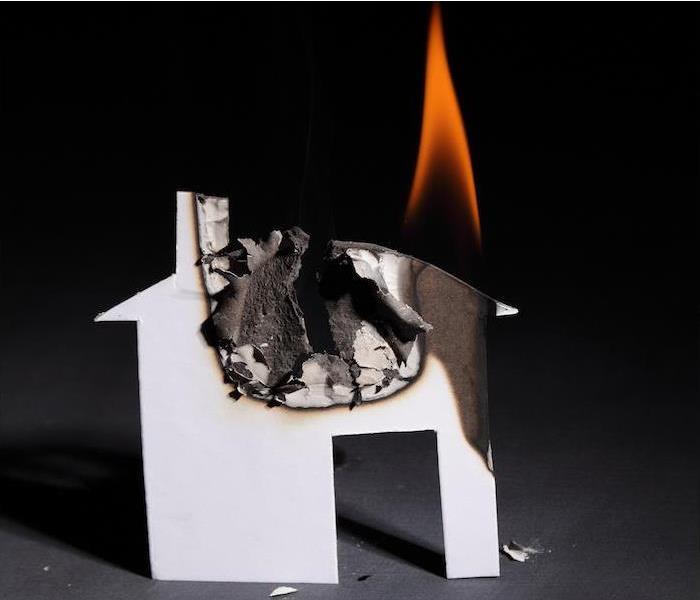 If your home or business has any damage, SERVPRO of Cambridge/Belmont is ready around the clock to help you recover.
If your home or business has any damage, SERVPRO of Cambridge/Belmont is ready around the clock to help you recover.
You might have read that title and wondered why on earth we’re talking about a geometric term, the tetrahedron.
Well, we’re not actually talking about geometry in today’s blog. We are actually going to discuss the fire tetrahedron.
If you think back on your childhood education, you may remember that a tetrahedron is a four-faced shape. That’s the connection, because there are essentially four “faces” to fire, or four things it can’t live without.
The 4 Things a Fire Needs to LiveFuel. Adding “fuel to the fire” is a saying because in order for a fire to live or grow is has to have a fueling agent. Things like wood, plastics or many other common things are potential fuel sources for both planned fires and accidental ones.
Heat. In order for a fire to start, you have to have enough heat to make it burn. Different types of fires will require a different amount of heat. Some objects will simply melt when they hit a certain temperature, while others will combust, which can be a major danger.
Oxygen. Humans require oxygen to live, and so do fires. Oxygen feeds a fire, causing it to grow and also generate products of combustion.
Chemical Chain Reaction. A chain reaction is something that perpetuates a fire so long as it is undisturbed.
The 4 Ways to Stop a FireCool it. The point of dousing a fire with water is to cool it to a point that combustion is no longer possible. By cooling your burning material, you are cooling it to a thermal balance.
Smother it. You may remember another common childhood lesson—“stop, drop and roll.” We were taught to take those actions if our clothing caught on fire. There’s a reason for that. When you drop to the ground, covering your clothing, it cuts off the oxygen supply to the fire, which smothers it.
Starve it. This works similarly to smothering the fire, except instead of removing oxygen, you’re removing the fuel source.
Interrupt the chain reaction. There are chemical agents, such as halon, that can be very effective in putting out a fire. However, this chemical has an elevated potential for ozone depletion, meaning it is harmful to the environment, and has been banned.
If the fire tetrahedron makes a wreck of your home or business, we’re ready around the clock to help you recover. Contact SERVPRO anytime for fast, thorough cleanup and recovery after a fire.
The Leading Causes of House Fires & How to Prevent Them | SERVPRO® of Cambridge/Belmont
11/8/2021 (Permalink)
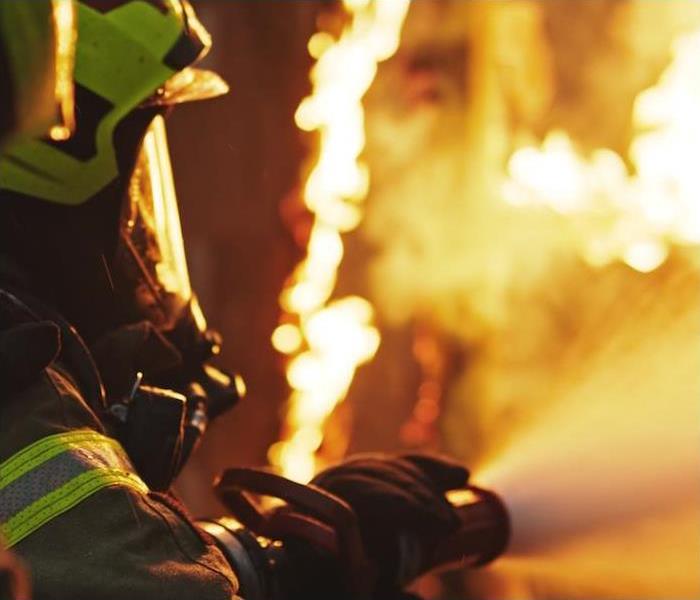 Regardless of the cause, SERVPRO of Cambridge/Belmont are here for you if your home is affected by fire.
Regardless of the cause, SERVPRO of Cambridge/Belmont are here for you if your home is affected by fire.
No homeowner wants to face a home fire. Fires cause devastation and spread unpredictably. It’s best to be prepared and have a plan in the event a fire occurs.
But despite all the technological advancements and advocacy campaigns, home fires still account for a quarter of all reported home fires.
Prevention is the key, so let’s look at the top causes of these house fires and see if we can get that number down by learning how to prevent them:
Cooking. This is the leading cause of home fires, by far! Almost half of all house fires start in the kitchen, and the main reason is unattended cooking. Want to reduce your chance of a home fire? Don’t leave the kitchen while you’re cooking.
Heating equipment. Nationally, 14% of all home fires are started by heating equipment. It’s a combination of things that cause this, including equipment malfunctions and accidents, but the biggest culprit is space heaters and having flammable items too close.
Electrical fires. These fires are generally caused by higher electrical demand in the home due to the increased amount of electronics. Add to that faulty or overloaded circuits in older homes, and these are the factors that contribute to electrical fires at home. Using ungrounded plugs or even placing high-wattage bulbs into low-wattage sockets can also start these fires.
Intentional fires. Arson is still an issue as well. Over 28,000 home fires are intentionally set each year. We use the word intentional because the fire was started with the purpose of burning the structure instead of an accident causing the fire.
Smoking materials. Way too many people still smoke and fall asleep. While smoking materials account for only 5% of all house fires, they are the leading cause of civilian fire deaths. These often start because cigarettes are left burning as people fall asleep and that makes the victim more susceptible.
Regardless of the cause, SERVPRO is here for you if your home is affected by fire. Contact your local team today to see how we can help.
With Fall Weather Comes New Fire Dangers | SERVPRO® of Cambridge/Belmont
11/8/2021 (Permalink)
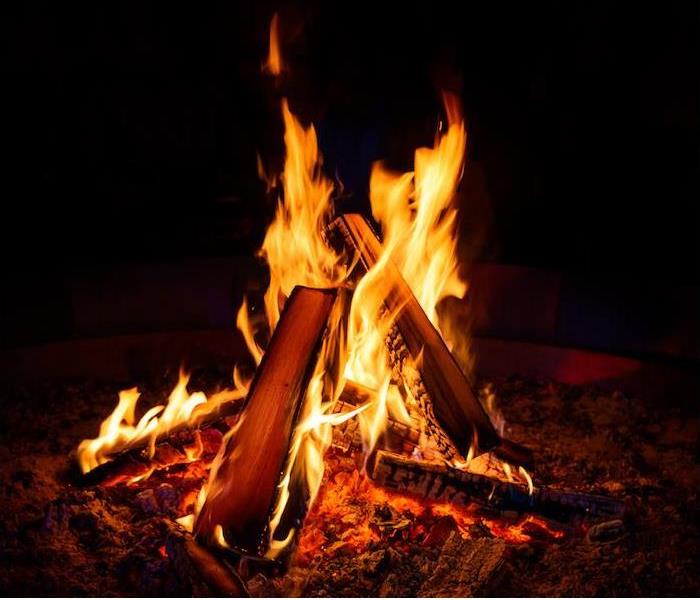 Be mindful about fall fire safety. Always remember that SERVPRO of Cambridge/Belmont is the trusted leader in the restoration industry.
Be mindful about fall fire safety. Always remember that SERVPRO of Cambridge/Belmont is the trusted leader in the restoration industry.
One nice aspect of living in Cambridge is that we get to experience all four seasons. And fall is quickly approaching! The official start of the season is Sept. 22 this year.
Fall is a favorite season for campers, leaf-peepers and of course trick-or-treaters. There are lots of fun activities to do during autumn.
But along with the fun comes a few potential fire hazards. So grab a pumpkin spice latte, and let’s look over fire safety tips for the season.
Campfires and Fire Pits
This is the season for campfires and fire pits. But when you’re indulging, be sure to do so safely.
Knowing where and how to build a campfire is as important as knowing how to put it out. Start small with twigs and tinder and then ad larger stick and wood.
Use an extended lighter to start the fire if you have one. If not, consider buying one. Accelerants like kerosene or lighter fluid should be avoided.
Build your fire away from structures and other flammable items. And finally, extinguish your fire completely before leaving your campfire or fire pit.
Slowly douse it with a bucket of water to make sure no embers remain. A slight breeze can restart an ember and possibly cause a fire.
Fall Burning of Yard Debris
This time of year, yards are becoming full of dried leaves and many people like to burn leaves as a method of disposal. Make sure you check with Cambridge Fire Department to obtain a burn permit prior to burning.
Never burn household trash or debris can that can have adverse effects like explosions or the release of toxic fumes.
Safety With Space Heaters
Portable space heaters are one of the most frequent causes of home fires in fall and winter. Following the proper safety precautions with space heaters is important for life and property safety.
Always keep your heater away from flammable objects. Make sure your heater has an automatic shutoff in case the heater turns over or overheats.
Plug any space heater directly into the outlet and avoid extension cords if possible.
If a fire hazard should turn from potential to reality in your home, remember the trusted leader in the recovery industry and contact SERVPRO to get your property fully restored right down to the smell of smoke.
Precautions to Take to Keep Your Home Safe From Wildfires | SERVPRO® of Cambridge/Belmont
9/6/2021 (Permalink)
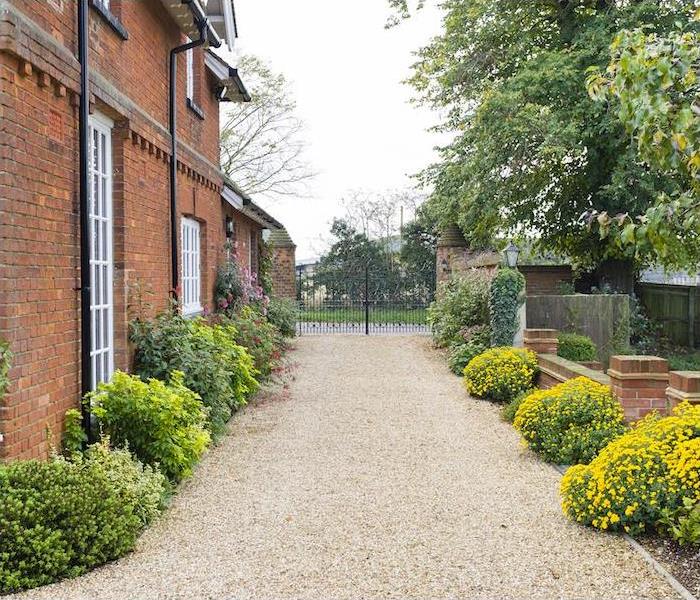 If your home is damaged by fire or any other reason, SERVPRO of Cambridge/Belmont is ready and able to repair any damage.
If your home is damaged by fire or any other reason, SERVPRO of Cambridge/Belmont is ready and able to repair any damage.
While flooding is a major concern in the greater Boston area, there is also a risk of wildfire. While the risk may be lower in Massachusetts than in other parts of the country, it is still a risk, and wildfires by their very nature can cause great damage.
There are a number of steps you can take in advance to minimize the risk of a wildfire affecting your home and property. First and foremost, it’s important to simply be more careful when it comes to fire hazards.
But defensible space is another important protocol you can implement.
Create a Barrier of Protection Around Your Home
Creating a fire break around your home is recommended by most communities and its law in a few states. State and federal agencies have coined the term “defensible space.”
This essentially creates a buffer zone around your house that removes most, if not all, of the fuel available for a wildfire. Things like dead trees, broken-off tree limbs and gutters full of debris are all examples of the fuel that makes wildfires extra dangerous around a home.
Defensible space involves removing combustibles and incorporating nonflammable elements in landscaping, which creates a barrier around your home from the flames, embers or even heat from a wildfire. This is the best way to slow down or stop a wildfire.
States like California require defensible space by law and all homeowners must comply. In Massachusetts, it’s simply recommended.
The Rising Number of Wildfires
While California is a hot spot for wildfires, they happen in other parts of the country as well. Last year, we experienced over 59,000 wildfires.
Of the 59,000 wildfires, over 10,000 occurred in California! That still leaves each state in the union an average of 1,000 wildfires per month. Here in Massachusetts, we had 1,189 wildfires in 2020.
Creating defensible space is something tangible we can do in advance a wildfire, so it’s a great place to begin when it comes to protecting your home.
If your home is damaged by fire of any sort, wild or not, SERVPRO is ready and able to repair the damage caused. Get in touch today to get the pros on your team.
Smoke Damage
8/19/2021 (Permalink)
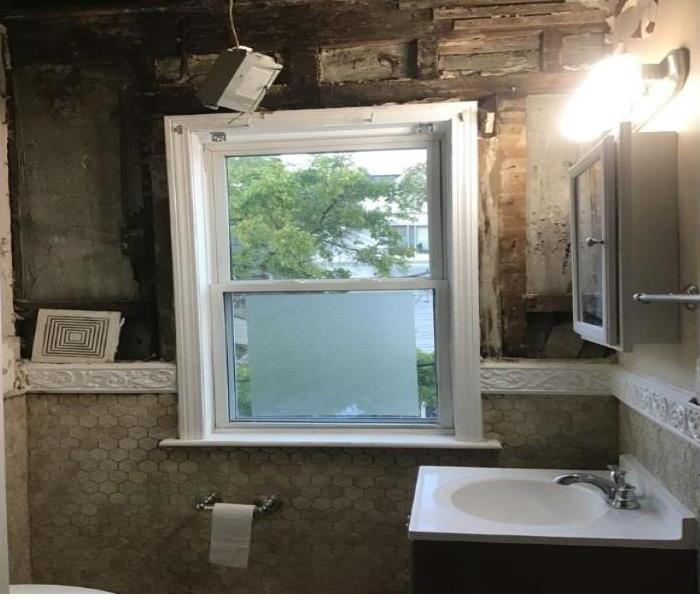 We are always here when you need us!
We are always here when you need us!
Fire damage is the physical damage to a property as a result of burning. The damage can be directly caused by flames or indirectly due to smoke and other substances emitted by fire such as soot. Smoke and soot can be as damaging to your property as actual flames. This is because the smoke will create black clouds throughout the walls, ceiling, and porous materials in your property. There is also a strong odor associated with smoke that is very hard to remove from porous materials such as clothes, carpets and furniture. In the unfortunate event your home or business experiences fire damage (flames, smoke or soot) we recommend you enlist the help of a professional to help you clean your property as thoroughly as possible. If a firefighter was called to your property the likelihood that water damage occurred is highly likely. In this event you have to make sure that the water is dried as quickly as possible to prevent the possible growth of mold. When mold grows it will spread quickly, cause possible health effects and increase the cost of remediation. For this reason edge on the side of caution and just hire a professional in the beginning. We at SERVPRO of Cambridge/Belmont will ensure we get everything done right the first time so you can have your peace of mind and property back!
Fire Safety Tips
8/19/2021 (Permalink)
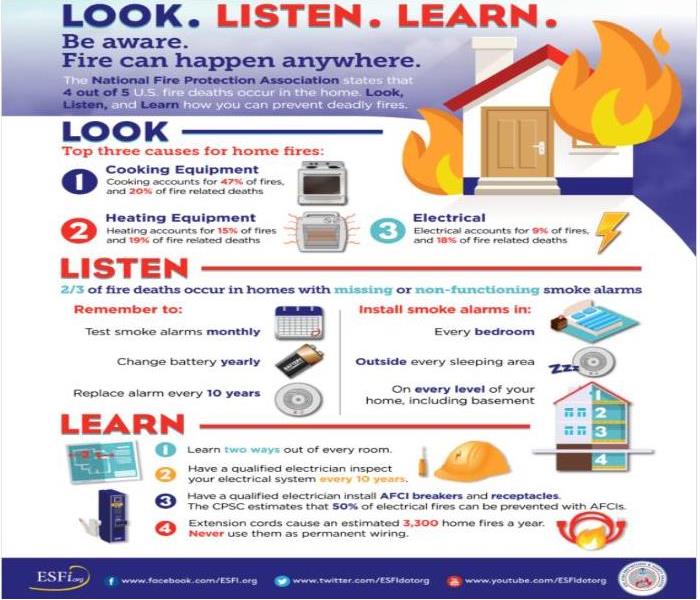 If you do have a fire call SERVPRO of Cambridge/Belmont (617) 864-7378
If you do have a fire call SERVPRO of Cambridge/Belmont (617) 864-7378
A house can easily catch fire from the misuse of appliances to smoking in bedrooms. You can take measures to avoid fire in your home and ensure the safety of your family. Below are some of the most common causes of household fires, and some tips to take precautions.
Cooking Equipment
Pots and pans can overheat and cause a fire very easily if the person cooking gets distracted and leaves cooking unattended. Always stay in the room, or ask someone to watch your food, when cooking on hotplates.
Heating
Keep portable heaters at least 5’ away from anything that could easily catch fire such as furniture, curtains, laundry, clothes and even you. If you have a furnace, get it inspected once a year to make sure it is working to safety standards.
Smoking in bedrooms
Bedrooms are best to be kept off limits for smoking. A cigarette that is not put out properly can cause a flame, as the butt may stay alit for a few hours. It could burst into flames if it came into contact with flammable materials, such as furniture. Did you know that fires started in the bedroom or lounge make up 73% of all house fire fatalities?
Electrical Equipment
An electrical appliance, such as a toaster can start a fire if it is faulty or has a frayed cord. A power point that is overloaded with double adapter plugs can cause a fire from an overuse of electricity. A power point extension cord can also be a fire hazard if not used appropriately. Double check the appliances and power points in your home.
Candles
Candles look and smell pretty, but if left unattended they can cause a room to easily burst into flames. Keep candles away from any obviously flammable items such as books and tissue boxes. Always blow a candle out before leaving a room. Did you know that in Perth last year 34 house fires started as a result of candles?
Curious Children
Kids can cause a fire out of curiosity, to see what would happen if they set fire to an object. Keep any matches or lighters out of reach of children, to avoid any curiosity turned disaster. Install a smoke alarm in your child’s room and practice a home escape plan with your children and family in case there was a fire. Inform your kids the importance of knowing their address knowing their address and if they needed to, call 911.
Faulty Wiring
Homes with inadequate wiring can cause fires from electrical hazards. Some signs to see if you’ve bad wiring are: 1) Lights dim if you use another appliance; 2) For an appliance to work, you have to disconnect another; 3) Fuses blow or trip the circuit frequently. Have a licensed electrician come and inspect your house, or contact your landlord if you have any of the above occurrences.
Barbeques
Barbeques are great for an outdoor meal, but should always be used away from the home, tablecloths or any plants and tree branches. Keep BBQs regularly maintained and cleaned with soapy water and clean any removable parts. Check the gas bottle for any leaks before you use it each time.
Flammable Liquids
If you have any flammable liquids in the home or garage such as petrol, kerosene or ethylated spirits, keep them away from heat sources and check the label before storing. Be careful when pouring these liquids.
Lighting
Lamp shades and light fittings can build up heat if they are very close to light globes. Check around the house to make sure. Lamp bases can become a hazard if they are able to be knocked over easily, and so should be removed if they are. Check that down lights is insulated from wood paneling or ceiling timbers.
The above tips are a good guide to avoiding a fire in your home. If you do have a fire and need assistance with the cleanup, please call SERVPRO of Cambridge/Belmont (617) 864-7378
With Outdoor Activities in Spring, the Risk of Fire Increases | SERVPRO® of Cambridge/Belmont
6/15/2021 (Permalink)
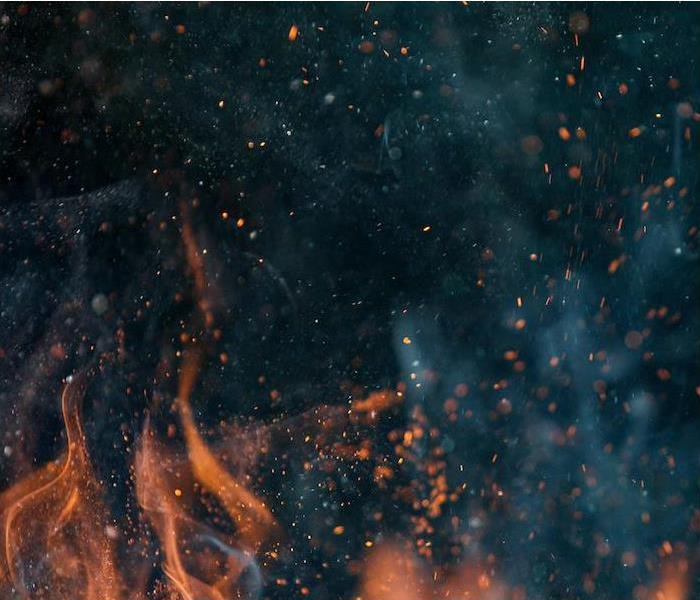 Restoring fire and smoke damage is one of our specialties. Contact SERVPRO of Cambridge/Belmont to learn more.
Restoring fire and smoke damage is one of our specialties. Contact SERVPRO of Cambridge/Belmont to learn more.
As old man winter starts to ease its grip on Boston and with the long cold days behind us, spring is right around the corner. Spending more time outdoors is now a priority since the weather is milder. However, with the increased outdoor activity, there also comes and increased risk of fire.
Spring brings with it the increased risk of fire mainly due to the increased outdoor activity around the grill. Unfortunately, spring is responsible for the largest increase in average daily fires.. But if you are diligent, we can all work to prevent fires this spring.
The Fire Marshall Say Pay Special Attention to These Areas Around the Home
BBQing. Single-handedly, the grill is responsible for a large percentage of outdoor fires, with lack of proper cleaning being the major cause.. When you have fuel, flame and grease in close proximity, that recipe has all the ingredients for a grill fire. Food particles that fall through the grill grates and the accumulation of grease are the biggest cause of unintended grill fires. Clean the grill before each use, and replace defective or worn parts.
The fire pit. The grill gets its share of blame for accidental fires, but the fire pit is another source of unplanned outside fires. We all enjoy a nice spring evening, but temperatures can get cold after the sun goes down. The fire pit provides an opportunity to interact outside with others. These safety tips are important to remember: Don’t leave children unattended around a fire. Keep water close by. Adding debris or other materials, other than wood, to a fire pit should be avoided. This can cause “flare-ups” and embers can be carried away by gusting winds. Roasting food should be done over the embers and not the open flame.
The dryer vent and chimney. Chimneys and dryer vents are another cause of outdoor fires. Warmer weather brings fewer fires in the fireplace or woodstove. Ash, soot and creosote build up during the winter in the stove pipe, and unless it’s removed, the risk of fire increases. Professional chimney sweeps are well worth the investment. It’s hard and dirty work. Clogged dryer vents are another opportunity for fire damage. The leading reason for fires in a clothes dryer is clogged lint in the dryer vent. Don’t become a statistic; keep dryer vents cleared of excess lint.
Has your home or business recently suffered fire or smoke damage? Our tech’s will be there fast and have it cleaned up quick. We’re available 24⁄7 for emergency situations. Call or click today and experience the SERVPRO difference.
It’s Easier Than You Think to Lower Your House Fire Risk this Winter | SERVPRO® of Cambridge/Belmont
3/11/2021 (Permalink)
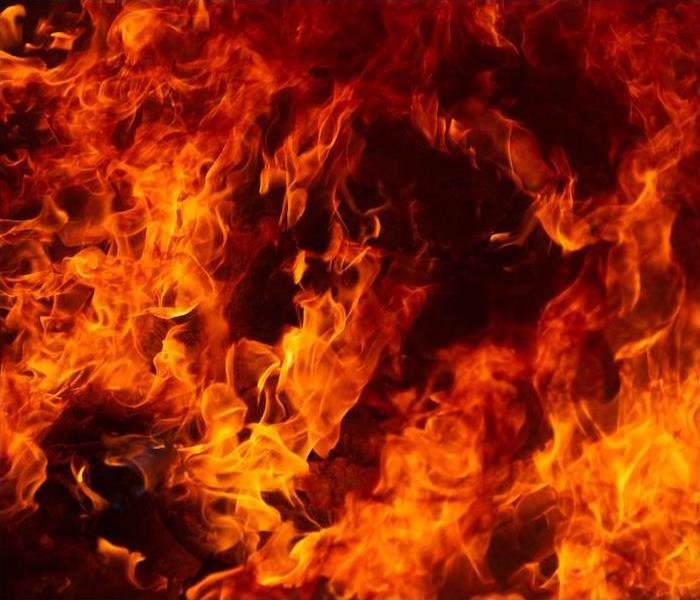 House fires tend to peak during the winter. SERVPRO of Cambridge/Belmont are available 24/7 in the event of an emergency.
House fires tend to peak during the winter. SERVPRO of Cambridge/Belmont are available 24/7 in the event of an emergency.
Your SERVPRO team wants to help you make your home a safer place this winter. So we’ve put together these helpful tips for Belmont homeowners.
You can find a lot of information about fire prevention, but we think these tips can be beneficial because you can implement them quickly. It won’t cost you a lot of time or money. And it will make your family safer.
Ways to Make Your Home Safer This Winter
Here are a few ways experts say you can lower your winter fire risk:
Make your kitchen safer from grease fires. Grease fires are a common problem in the kitchen. You can’t put them out with water, and pulling a skillet off the stove can spread the fire. Instead, keep a fire extinguisher nearby. While a fire extinguisher is best, you can smother these fires with a lid or use baking soda to put them out.
Don’t let your furnace go without maintenance. Even if your furnace seems to be working well, it’s smart to have it serviced every winter. It’s easy for issues liked clogged ducts and vents to go unnoticed until they become a fire hazard. Stop those fires before they start by having the furnace checked.**
Use your fireplace safely. Assuming your chimney is good to go (meaning it’s clear), then you may want to light a fire on a cold night. If you do, be sure you’re disposing of the ashes correctly and regularly cleaning your fireplace. A fireplace caked in ashes can become a fire hazard.
Be careful with your candles. Many people love the look and smell of a candle burning on a cold night. Enjoy them safely while you’re home, but don’t leave them burning when you leave.
If your home is damaged due to a fire or any other cause, you can always count on us for restoration assistance. We have crews who are available 24⁄7 in the event of an emergency. Contact us at any time to learn more about our restoration services and how we can help your family.
Fire Prevention
12/14/2020 (Permalink)
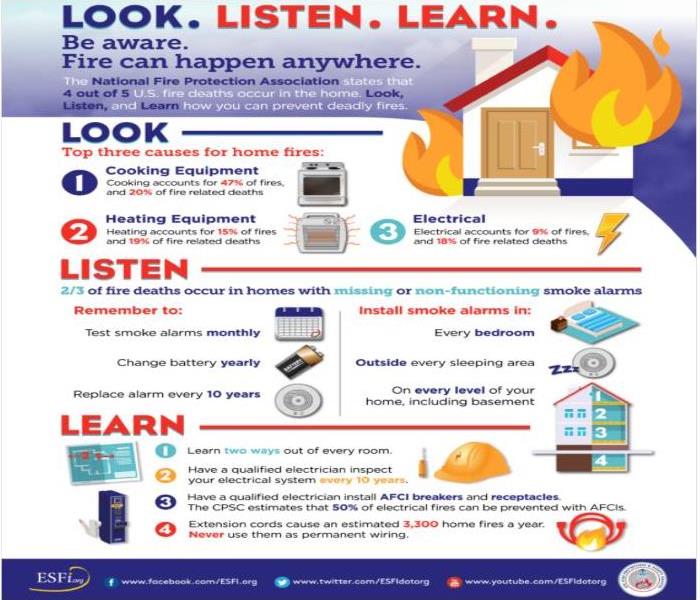 Fire safety is important. Call us if you experience fire damage in your home or business 617-864-7378
Fire safety is important. Call us if you experience fire damage in your home or business 617-864-7378
The following are things you can do to protect yourself, your family, and your property in the event of a
Fire:
SMOKE ALARMS AND CARBON MONOXIDE DETECTORS
Install smoke alarms. Properly working smoke alarms decrease your chances of dying in a fire by half.
Place smoke alarms on every level of your residence, including the basement.
Install a working carbon monoxide detector in the common area of the bedrooms.
Test and clean smoke alarms once a month and replace batteries at least once a year. Replace smoke alarms once every 10 years.
COOKING SAFETY
Never leave cooking unattended.
Always wear short or tight-fitting sleeves when you cook.
Keep towels, pot holders and curtains away from flames
Never use the range or oven to heat your home.
ESCAPING THE FIRE
Have an escape plan. Review escape routes with your family.
Make sure windows are not nailed or painted shut.
Teach family members to stay low to the floor, where the air is safer, when escaping from a fire.
In high-rise, never lock fire exits or doorways, halls or stairways. Never prop stairway or other fire doors open.
HEATING SOURCE
Place space heaters at least three feet away from flammable/combustible materials.
Use only the type of fuel designated for your space heater.
MATCHES/LIGHTERS AND SMOKING
Keep matches/lighters away from children.
Never smoke in bed or when drowsy or medicated.
If you must smoke, do it responsibly.
ELECTRICAL WIRING
Inspect extension cords for frayed or exposed wires or loose plugs
Make sure outlets have cover plates and no exposed wiring.
Make sure wiring does not run under rugs, over nails, or across high traffic areas.
Do not overload extension cords or outlets.
If you do have a fire, please call SERVPRO of Cambridge/Belmont (617) 864-7378 to assist you in the cleanup
Practicing Fire Safety This Holiday Season | SERVPRO® of Cambridge/Belmont
11/19/2020 (Permalink)
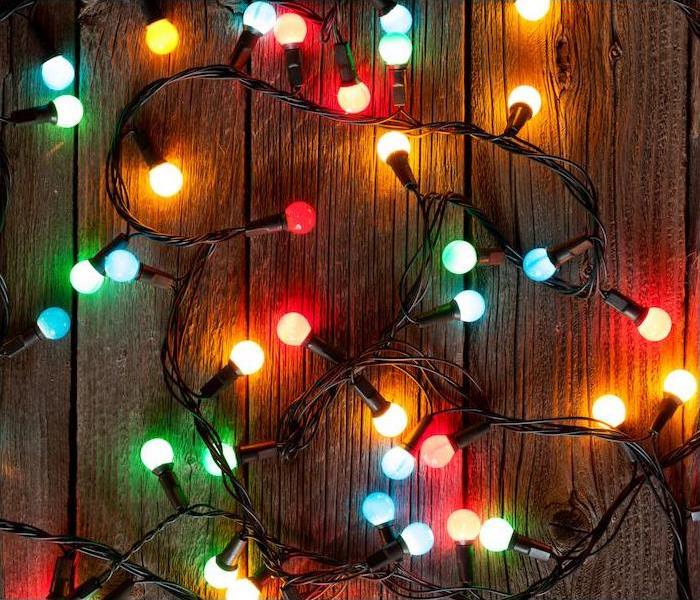 Make sure your fire risk is low during the holidays. If you experience any damage, SERVPRO of Cambridge/Belmont will be here to help.
Make sure your fire risk is low during the holidays. If you experience any damage, SERVPRO of Cambridge/Belmont will be here to help.
The holiday season always arrives rapidly, and as we get our homes and ourselves ready to celebrate, it is still important to keep the importance of fire safety in focus. Winter is the peak of fires in the home according to the Red Cross, partially because of the risky activities that occur primarily in the wintertime.
Cooking is always a concern, but winter also brings about the concerns of heating and decoration that are not present at other times of the year. Do not give fires the opportunity to spark by focusing on fire safety as you celebrate the best of winter.
Wintertime Tips for Fire Prevention
Keep safe when cooking. The top cause of house fires is cooking at any time of year, but more people tend to prepare large meals and increase the frequency of their baking when it is cold outside. It is wise to practice fire safety each time you cook, keeping a fire extinguisher nearby and keeping flammable items at least three feet from the stove. Make sure children and pets are not allowed near open flames in the kitchen as well.
Heat the house with proper precautions. Many people make use of space heaters and fireplaces to supplement their home’s heating system, but it is important that you always use these tools with caution. Space heaters should always cut off if they get too hot or tip over, and should never be used on carpet or near flammable items. If you use a fireplace, be sure to get your chimney inspected every year and never allow a fire to burn unattended.
Decorate with care. The decorations commonly associated with Christmas, such as trees and lights, present an electrical hazard if they are not installed correctly. Christmas tree fires due to electricity are extremely common, often as a result of the lights being plugged in improperly. Make sure to not overload outlets or power cables, and never use decorations with frayed wiring.
If you have damage due to a house fire, you can depend on us to help. Contact us 24 hours a day to report damage and receive a quick response from our certified restoration technicians. Get in touch today.
Unwanted Fires and its affect on your property
8/11/2020 (Permalink)
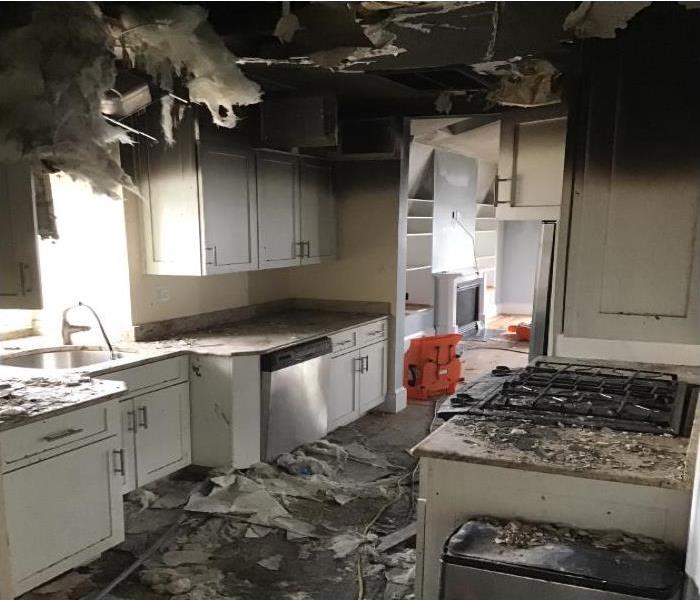 Be prepared, Call SERVPRO
Be prepared, Call SERVPRO
Fire damage is the physical damage to a property as a result of burning. The damage can be directly caused by flames or indirectly due to smoke and other substances emitted by fire such as soot. Smoke and soot can be as damaging to your property as actual flames. This is because the smoke will create black clouds throughout the walls, ceiling, and porous materials in your property. There is also a strong odor associated with smoke that is very hard to remove from porous materials such as clothes, carpets and furniture. In the unfortunate event your home or business experiences fire damage (flames, smoke or soot) we recommend you enlist the help of a professional to help you clean your property as thoroughly as possible. If a firefighter was called to your property the likelihood that water damage occurred is highly likely. In this event you have to make sure that the water is dried as quickly as possible to prevent the possible growth of mold. When mold grows it will spread quickly, cause possible health issues and increase the cost of remediation. For this reason edge on the side of caution and just hire a professional in the beginning. We at SERVPRO of Cambridge/Belmont will ensure we get everything done right the first time so you can have your peace of mind and property back!
Don't Overload Your Outlets!
8/11/2020 (Permalink)
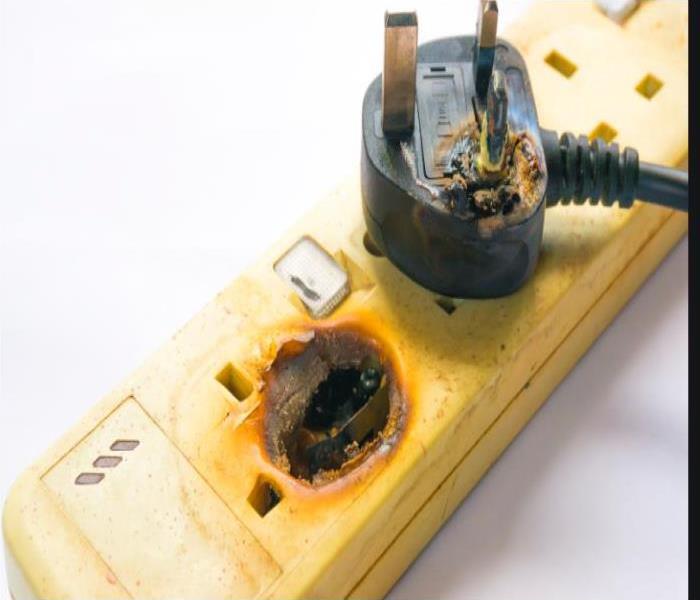 Make sure you check circuits so they are not overloaded
Make sure you check circuits so they are not overloaded
Overloaded circuits are one of the leading cause of fires in homes. It can be as simple as an overloaded outlet! There is too much energy which the conductor does not have the capacity to disperse. The energy build up converts to heat. The heat build up with the static from the electricity cause fire to ignite.
If a fire starts in your home due to an overloaded circuit do not try to handle the fire on your own as you can risk electrocution. Instead, call 911 and get yourself and your family to a safe place. Once the fire has been put out call your insurance company and a remediation company like us to help get your home back to pre loss condition.
We are always here to help in the event of a fire in your home or commercial space. We offer local support and expertise 24/7 to ensure you are taken care of! Give SERVPRO Cambridge/Belmont a call at 617- 864-7378.
Smoke/Soot - Get the Facts
7/31/2020 (Permalink)
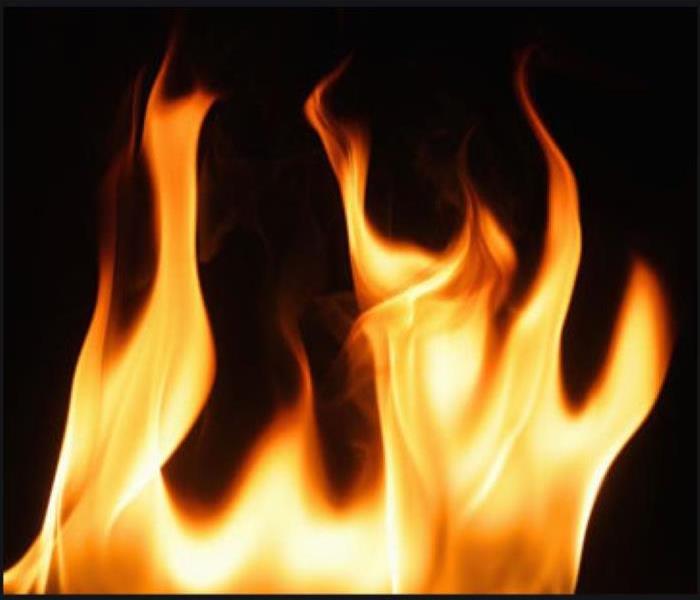 Smoke can cause a lot of damage
Smoke can cause a lot of damage
Smoke and soot is very invasive and can penetrate various cavities within your home, causing hidden damage and odor. Our smoke damage expertise and experience allows us to inspect and accurately assess the extent of the damage to develop a comprehensive plan of action.
Smoke and soot facts:
- Hot smoke migrates to cooler areas and upper levels of a structure.
- Smoke flows around plumbing systems, seeping through the holes used by pipes to go from floor to floor.
- The type of smoke may greatly affect the restoration process.
Different Types of Smoke
There are two different types of smoke–wet and dry. As a result, there are different types of soot residue after a fire. Before restoration begins, SERVPRO of Cambridge/Belmont will test the soot to determine which type of smoke damage occurred. The cleaning procedures will then be based on the information identified during pretesting. Here is some additional information:
Wet Smoke – Plastic and Rubber
- Low heat, smoldering, pungent odor, sticky, smeary. Smoke webs are more difficult to clean.
Dry Smoke – Paper and Wood
- Fast burning, high temperatures, heat rises therefore smoke rises.
Protein Fire Residue – Produced by evaporation of material rather than from a fire
- Virtually invisible, discolors paints and varnishes, extreme pungent odor.
Our Fire Damage Restoration Services
Since each smoke and fire damage situation is a little different, each one requires a unique solution tailored for the specific conditions. We have the equipment, expertise, and experience to restore your fire and smoke damage. We will also treat your family with empathy and respect and your property with care.
Have Questions about Fire, Smoke, or Soot Damage?
Call Us Today – (617) 864-7378
Most Common Causes of Fire in the Workplace
7/31/2020 (Permalink)
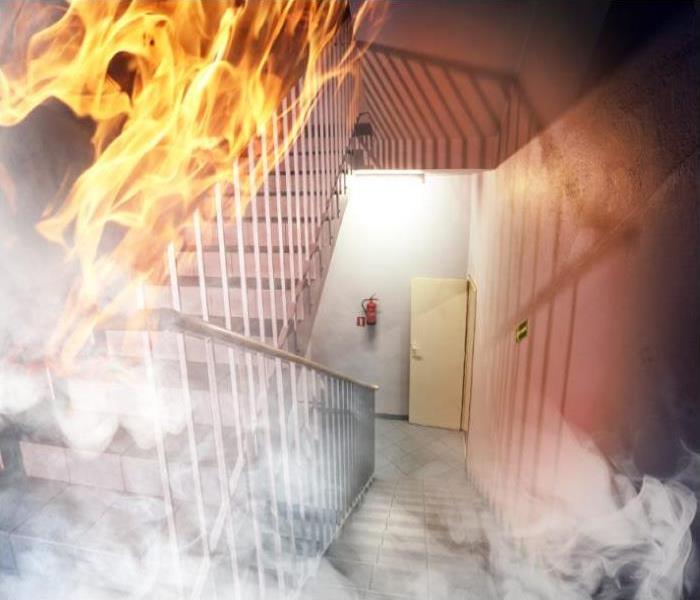 Workplace fires can be stressful but knowing what to do will certainly help!
Workplace fires can be stressful but knowing what to do will certainly help!
Electrical Fires
Over 25% of all fires are linked to a malfunction of either a piece of electrical equipment, wiring, or both. Electricity is a common source of ignition for major fires. One way to avoid problems with electrical fires is to establish an electrical safety program.
All employees should be thoroughly familiar with the safety procedures for their particular jobs. To maximize his or her own safety, an employee should always use tools and equipment properly. Extension cords must be inspected before use, and those found questionable, removed from service and properly tagged. Damage or inadequate maintenance can cause equipment to deteriorate, resulting in unsafe conditions.
Flammable and Combustible Materials
There are thousands of chemicals in use in the modern American workplace. One of the most prevalent dangers of these chemicals is their flammability or combustibility. Improper handling of flammable materials brings a great risk of fire. When a flammable liquid is spilled, vapors begin to form immediately. It is the vapors that will ignite, and which pose the greater danger.
Flammable liquid spill cleanup should begin immediately. Vapors will continue to build until the liquid is removed, and they can be ignited by a variety of sources in the average workplace. The best way to avoid fire caused by these materials is to follow all OSHA guidelines when dealing with flammables.
Human Error
The most common reason for a sprinkler system failure is human error. Often times the water supply was turned off at the time of the fire. The success of fire prevention strategies depends primarily on pre-planning, preparation, equipment quality, and the readiness of personnel. Employees and loss prevention practitioners must be knowledgeable about the proper use of extinguishers. If the wrong extinguisher is used, a fire may become more serious.
General Negligence
Negligence is another common cause of fire in the workplace. It’s slightly different from fires caused by human error. Negligence occurs when an employee does not follow established procedures and knowingly undertakes an activity that is a potential fire hazard.
Fire caused by negligence can be the result of:
- Hot surfaces too close to heating equipment
- Open flame that’s not properly located or protected
- Not following smoking restrictions or careless disposal of butts, ashes, and matches
Good common sense, self awareness, and close adherence to policy are a great way to avoid fires caused by general negligence. Posting fire safety signs in common areas is another way to keep fire safety at top of mind.
Arson
The premise behind arson prevention, like other prevention programs, is to address the opportunity to commit the crime. Arsonists, like other criminals, typically prefer to start fires in locations that are secluded or hidden. Prevention programs often suggest improving the surveillance in these areas by lighting the area, removing visual obstructions to natural observation, and moving the targets such as dumpsters.
If your company, please call SERVPRO of Cambridge/Belmont (617) 864-7378 to assist you with the cleanup.
An Ozone Machine is an effective tool to deodorize contents after a fire
1/23/2020 (Permalink)
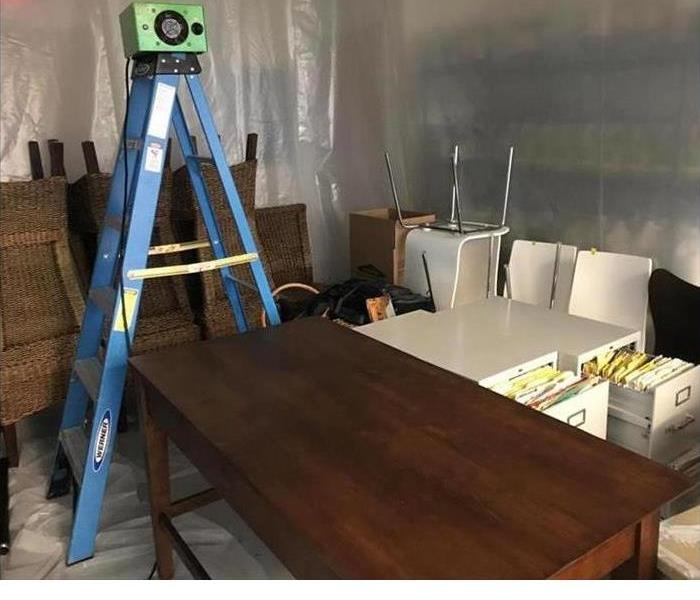 An ozone machine deodorizing contents in an ozone chamber
An ozone machine deodorizing contents in an ozone chamber
The contents of a house that have had a fire usually need to be deodorized to eliminate lingering odors. SERVPRO of Cambridge/Belmont uses an ozone machine to eliminate these odors. Ozone, (O3), sometimes called "activated oxygen", contains three atoms of oxygen rather than the two atoms we normally breathe. Ozone is the second most powerful sterilizer in the world and can be used to destroy bacteria, viruses and odors. Interestingly ozone occurs quite readily in nature, most often as a result of lightning strikes that occur during thunderstorms. In fact the "fresh, clean, spring rain" smells that we notice after a storm most often results from nature's creation of ozone. However, we are probably most familiar with ozone from reading about the "ozone layer" that circles the planet above the earth's atmosphere. Here ozone is created by the sun's ultra-violet rays. This serves to protect us from the ultra-violet radiation.
How does ozone work?
The third oxygen atom of ozone makes it extremely reactive. This atom readily attaches itself to other odor molecules. When contaminants such as odors, bacteria or viruses make contact with ozone, their chemical structure is changed to less odorous compounds. As more ozone attacks the remaining compounds, the odor is eventually destroyed. This process is called oxidation. Ozone essentially reverts back to oxygen after it is used. This makes it a very environmentally friendly oxidant.
If your home or business has had a fire, please call SERVPRO of Cambridge/Belmont (617) 864-7378 to assist you.
Fire prevention tips
1/14/2020 (Permalink)
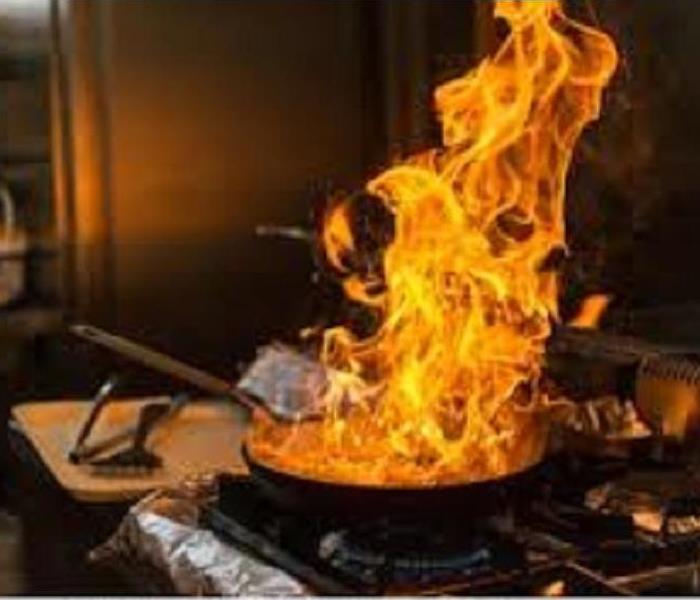 Kitchen grease fire with dangerous flames
Kitchen grease fire with dangerous flames
The following are things you can do to protect yourself, your family, and your property in the event of a
Fire:
SMOKE ALARMS AND CARBON MONOXIDE DETECTORS
Install smoke alarms. Properly working smoke alarms decrease your chances of dying in a fire by half.
Place smoke alarms on every level of your residence, including the basement.
Install a working carbon monoxide detector in the common area of the bedrooms.
Test and clean smoke alarms once a month and replace batteries at least once a year. Replace smoke alarms once every 10 years.
COOKING SAFETY
Never leave cooking unattended.
Always wear short or tight-fitting sleeves when you cook.
Keep towels, pot holders and curtains away from flames
Never use the range or oven to heat your home.
ESCAPING THE FIRE
Have an escape plan. Review escape routes with your family.
Make sure windows are not nailed or painted shut.
Teach family members to stay low to the floor, where the air is safer, when escaping from a fire.
In high-rise, never lock fire exits or doorways, halls or stairways. Never prop stairway or other fire doors open.
HEATING SOURCE
Place space heaters at least three feet away from flammable/combustible materials.
Use only the type of fuel designated for your space heater.
MATCHES/LIGHTERS AND SMOKING
Keep matches/lighters away from children.
Never smoke in bed or when drowsy or medicated.
If you must smoke, do it responsibly.
ELECTRICAL WIRING
Inspect extension cords for frayed or exposed wires or loose plugs
Make sure outlets have cover plates and no exposed wiring.
Make sure wiring does not run under rugs, over nails, or across high traffic areas.
Do not overload extension cords or outlets.
If you do have a fire, please call SERVPRO of Cambridge/Belmont (617) 864-7378 to assist you in the cleanup
Fire Prevention Month
10/31/2019 (Permalink)
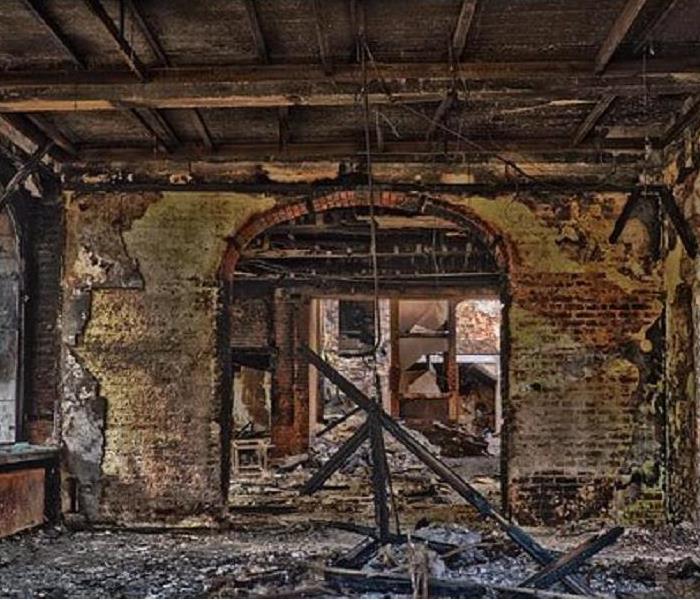 An oily rag self combusted, causing this garage fire.
An oily rag self combusted, causing this garage fire.
October is Fire Prevention Month, so it's a good time to think about fire safety where collector cars, motorcycles and boats are stored. Gasoline, oil, paints and solvents are just some of the flammable materials found in a typical garage.
Flammable Materials
Starting fluid, gasoline cans and other flammables should be kept in a special purpose cabinet for flammable materials. They should also be kept away from electrical cords, outlets and work benches where torches and grinders are used. The area around a bench grinder should be kept clear of anything flammable. The heat from the electricity can ignite the flammable materials. Oily rags are another dangerous item often left lying around shop and garage spaces. A tiny spark can set one smoldering, which can quickly lead to a fire. Special cans designed to protect oily rags from sparks and starve them of oxygen should they spontaneously combust are a piece of gear most people can afford.
Electrical devices
As we all know, electricity causes sparks, and sparks cause fires. Worm advises using smart battery tenders that shut off automatically when a battery is full, thereby avoiding an overheated battery and the potential for a fire. He also recommends disconnecting the battery on a car that's going to be sitting for a while. Dormant cars are prone to rodent damage, which can cause electrical shorts, sparks and fire. Also, it's a good idea to unplug tools, heaters and other electrical devices when they're not in use.
Fire extinguisher
In a small garage or workshop, The Cambridge Fire Department recommends keeping a fire extinguisher near the work bench, and one near the exit. The proper way to use an extinguisher is to aim at the base of the fire, sweeping from side to side until the fire is out or the extinguisher is spent. The Internet is full of videos depicting correct fire extinguisher use.
Heaters
Now that winter is coming, many enthusiasts will want heat in the garage. Propane heaters, which are designed to be used outside, should not be operated in an enclosed space.
Homeowners should think about the way cars are stored in a garage that contains more than one. Are they easy to get out? If there's a fire, more cars will be saved from the blaze if they're easy to remove from the structure.
If you do have a fire, please call SERVPRO of Cambridge/Belmont (617 864-7378) to assist you!
Common causes of Household Fires
8/1/2019 (Permalink)
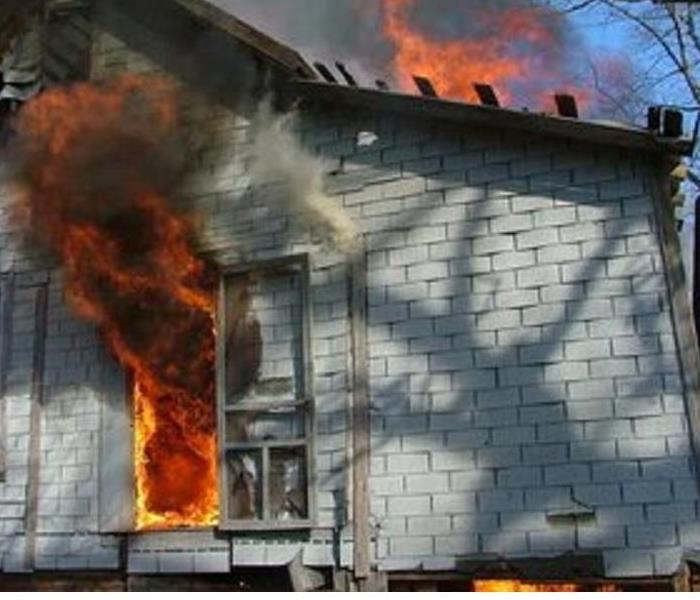 Roaring household fire
Roaring household fire
A house can easily catch fire from the misuse of appliances to smoking in bedrooms. You can take measures to avoid fire in your home and ensure the safety of your family. Below are some of the most common causes of household fires, and some tips to take precautions.
Cooking Equipment
Pots and pans can overheat and cause a fire very easily if the person cooking gets distracted and leaves cooking unattended. Always stay in the room, or ask someone to watch your food, when cooking on hotplates.
Heating
Keep portable heaters at least 5’ away from anything that could easily catch fire such as furniture, curtains, laundry, clothes and even you. If you have a furnace, get it inspected once a year to make sure it is working to safety standards.
Smoking in bedrooms
Bedrooms are best to be kept off limits for smoking. A cigarette that is not put out properly can cause a flame, as the butt may stay alit for a few hours. It could burst into flames if it came into contact with flammable materials, such as furniture. Did you know that fires started in the bedroom or lounge make up 73% of all house fire fatalities?
Electrical Equipment
An electrical appliance, such as a toaster can start a fire if it is faulty or has a frayed cord. A power point that is overloaded with double adapter plugs can cause a fire from an overuse of electricity. A power point extension cord can also be a fire hazard if not used appropriately. Double check the appliances and power points in your home.
Candles
Candles look and smell pretty, but if left unattended they can cause a room to easily burst into flames. Keep candles away from any obviously flammable items such as books and tissue boxes. Always blow a candle out before leaving a room. Did you know that in Perth last year 34 house fires started as a result of candles?
Curious Children
Kids can cause a fire out of curiosity, to see what would happen if they set fire to an object. Keep any matches or lighters out of reach of children, to avoid any curiosity turned disaster. Install a smoke alarm in your child’s room and practice a home escape plan with your children and family in case there was a fire. Inform your kids the importance of knowing their address knowing their address and if they needed to, call 911.
Faulty Wiring
Homes with inadequate wiring can cause fires from electrical hazards. Some signs to see if you’ve bad wiring are: 1) Lights dim if you use another appliance; 2) For an appliance to work, you have to disconnect another; 3) Fuses blow or trip the circuit frequently. Have a licensed electrician come and inspect your house, or contact your landlord if you have any of the above occurrences.
Barbeques
Barbeques are great for an outdoor meal, but should always be used away from the home, tablecloths or any plants and tree branches. Keep BBQs regularly maintained and cleaned with soapy water and clean any removable parts. Check the gas bottle for any leaks before you use it each time.
Flammable Liquids
If you have any flammable liquids in the home or garage such as petrol, kerosene or ethylated spirits, keep them away from heat sources and check the label before storing. Be careful when pouring these liquids.
Lighting
Lamp shades and light fittings can build up heat if they are very close to light globes. Check around the house to make sure. Lamp bases can become a hazard if they are able to be knocked over easily, and so should be removed if they are. Check that down lights is insulated from wood paneling or ceiling timbers.
The above tips are a good guide to avoiding a fire in your home. If you do have a fire and need assistance with the cleanup, please call SERVPRO of Cambridge/Belmont (617) 864-7378
Puffbacks
8/1/2019 (Permalink)
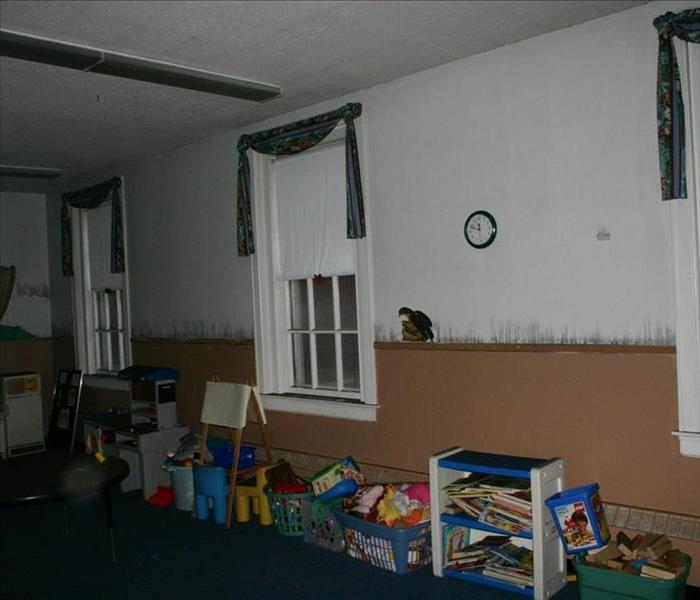 Puffback before the cleaning
Puffback before the cleaning
If your home has an oil burning furnace, there are several dangers to be aware of. Any furnace can experience a puff back, while puff backs are more common with oil systems, a furnace puff back can also occur with forced air, gas and hot water heating systems. A puff back in a furnace is a volatile explosion that occurs inside your furnace. The result of this explosion is fire and smoke being spewed out from your furnace. This fire, smoke and soot will damage your homes building materials and contents. This explosion will not be lethal, but can cause thousands of dollars in costly repairs and damage restoration, and can also cause health problems for you and your family. The explosions are caused by a buildup of vapor inside your furnace. This build up can occur with furnaces which have not been maintained properly. Parts sometimes need to be replaced, and bi yearly cleaning of your furnace and heating system will help prevent puff backs. Conducting a yearly exam of your heating system or having a professional check your heating system yearly will often times fully prevent a puff back from ever occurring.
If you have experience a puff back avoids doing the following: Try to clean or wash away soot residue yourself. This soot and smoke residue needs special cleaning methods, as it spreads easily. Soot stains can also set very quickly, making soot damage especially trick to clean if you should do it wrong. Soot is black carbon, and black carbon will stain extremely quickly when mixed with water and common household liquid cleaners. Should you attempt to remove the soot yourself and end up staining something with soot in your home, a professional cleaner may be required to remove the stain. Should you have soot damage, you should leave it to a professional to clean. SERVPRO professionals trained in soot damage have special cleaners and cleaning methods to use to remove your soot and soot damage. Use furniture or walk on carpeting affected by the fire or puff back. Do not use furniture that has been exposed to heat, soot or smoke. You can cause further damage to your furniture, until it is professionally cleaned and restored. Do not turn on any electronics such as computer, stereo's, and TV's until you have had them checked for soot damaged. Computers can be especially vulnerable and ruined as soon as they are turned on if soot has made its way inside them. This soot also contains a corrosive element, which will damage home's building materials, and contents such as your electronics, furniture, clothing and more. Not only can this soot damage your property, it can also affect the health of your loved ones by causing respiratory problems. This soot will often have a very terrible odor that will swiftly travel throughout the home, and will need to be cleaned and deodorized in order to remove the offensive odor from your home. If the soot and smoke travels through your home's duct work, it will need to be cleaned and deodorized as well. You also need to have a professional check your furnace following a puff back, to avoid further incidents. You may have a faulty part or an oil burner that may need replacing. If the problem is ignored, it can cause repeated and long lasting effects to your home. Should you have experienced a furnace puff back, you should SERVPRO of Cambridge/Belmont (617) 864-7378 to help with the clean up.
When to change the smoke alarm
7/31/2019 (Permalink)
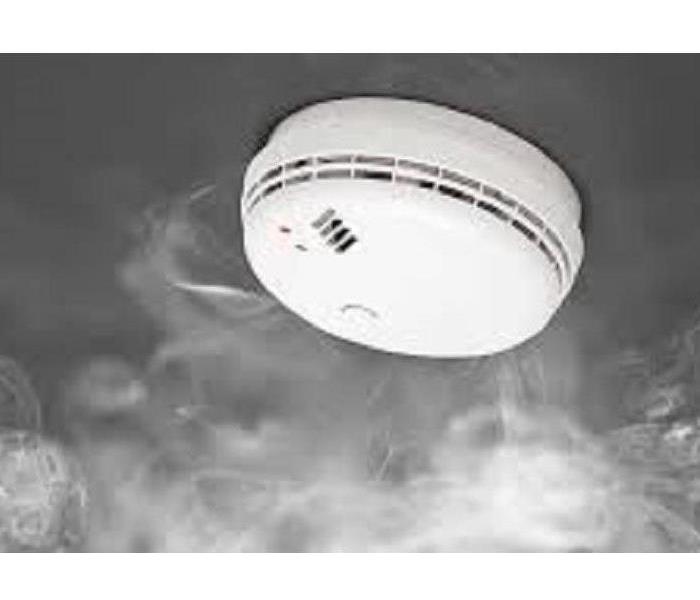 Active smoke alarm
Active smoke alarm
Your detectors are overdue for replacement, according to the National Fire Protection Association, which recommends that you replace detectors when they’re 10 years old. Top-rated security system experts we interviewed say that, over time, dust gathers inside smoke detectors, desensitizing the sensors. And even if a detector hasn’t reached the 10-year mark, replace it if it chirps after you’ve replaced the battery or if the alarm doesn’t sound when you perform the recommended monthly testing. Experts recommend replacing all connected detectors at the same time, even if some are working. Smoke detectors are an essential part of a fire-prevention strategy, so you should replace yours as soon as possible. In a 2014 report, the NFPA said three of every five home-fire deaths resulted from fires in homes with no smoke alarms or with none that worked.
You can replace hard-wired detectors yourself, if you can reach them and if you have sufficient skill to replace a light fixture. (Be sure to first turn off electricity at the breaker box.) Otherwise, you can hire an electrician or an alarm service company to do the job. The cost can vary widely, depending on where you live and on the type and number of units to be replaced, where they’re placed and the condition of the wires. Service providers we contacted charge a wide range of prices, from $35 to $40 per detector, plus a $50 for service charge, to $135 to $155 per detector.
Meanwhile, here are some NFPA safety tips:
- Install smoke alarms inside and outside each bedroom and sleeping area. Install alarms on every level of the home, including the basement. (Large homes may need extra smoke alarms.)
- Interconnected smoke alarms – whether hardwired or wireless – are best because when one is activated, they all sound.
- Test all smoke alarms at least once a month. Simply press the test button to be sure the alarm works.
- Ionization smoke alarms are quicker to warn of flaming fires. Photoelectric alarms are quicker to warn of smoldering fires. It’s best to use some of both types.
- A smoke alarm should be on the ceiling or high on a wall. Install wall-mounted alarms should no more than 12 inches from the ceiling to the top of the alarm.
- Don’t install smoke alarms near windows, doors, or ducts where drafts might interfere with their operation. To reduce false alarms, keep alarms at least 10 feet from a stove.
- Make sure everyone in your home knows how to respond if they hear a smoke alarm.
- Follow manufacturer’s instructions for cleaning.
If your smoke alarm goes off, immediately leave your home, follow your emergency plan & call SERVPRO of Cambridge/Belmont (617) 864-7378 to assist you assist you with the smoke cleanup.
Smoke & Soot cleanup
7/16/2019 (Permalink)
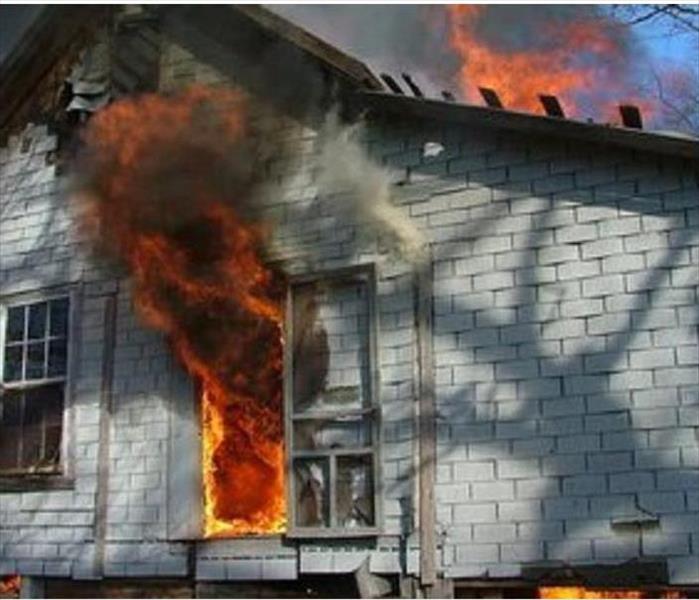 Active fire at a home in Cambridge, MA
Active fire at a home in Cambridge, MA
Smoke and soot is very invasive and can penetrate various cavities within your home, causing hidden damage and odor. Our smoke damage expertise and experience allows us to inspect and accurately assess the extent of the damage to develop a comprehensive plan of action.
Smoke and soot facts:
Hot smoke migrates to cooler areas and upper levels of a structure.
Smoke flows around plumbing systems, seeping through the holes used by pipes to go from floor to floor.
The type of smoke may greatly affect the restoration process.
Different Types of Smoke
There are two different types of smoke–wet and dry. As a result, there are different types of soot residue after a fire. Before restoration begins, SERVPRO of Cambridge/Belmont will test the soot to determine which type of smoke damage occurred. The cleaning procedures will then be based on the information identified during pretesting.
Wet Smoke – Plastic and Rubber
Dry Smoke – Paper and Wood.
Fast burning, high temperatures, heat rises therefore smoke rises.
Protein Fire Residue – Produced by evaporation of material rather than from a fire.
Virtually invisible, discolors paints and varnishes, extreme pungent odor.
Our Fire Damage Restoration Services:
Since each smoke and fire damage situation is a little different, each one requires a unique solution tailored for the specific conditions. We have the equipment, expertise, and experience to restore your fire and smoke damage. We will also treat your family with empathy and respect and your property with care.
Have Questions about Fire, Smoke, or Soot Damage?
Call SERVPRO of Cambridge/Belmont – (617) 864-7378
Fire in the workplace
5/2/2019 (Permalink)
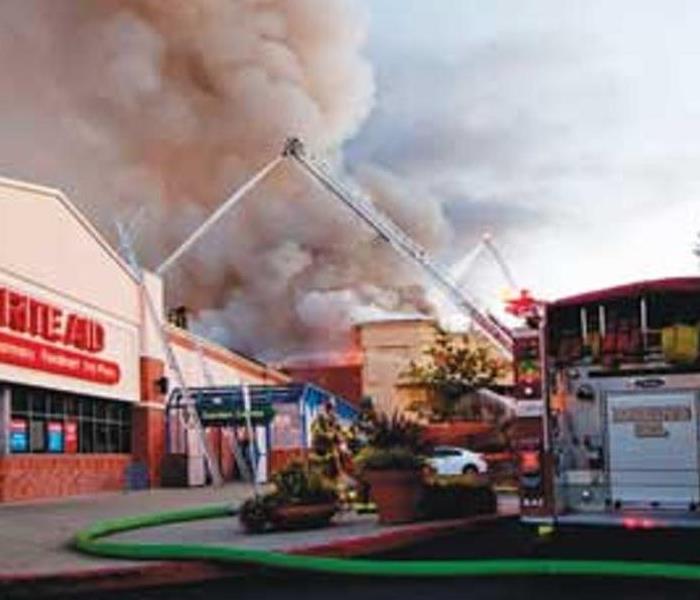 Store in the midst of a fire
Store in the midst of a fire
Most Common Causes of Fire in the Workplace
Electrical Fires
Over 25% of all fires are linked to a malfunction of either a piece of electrical equipment, wiring, or both. Electricity is a common source of ignition for major fires. One way to avoid problems with electrical fires is to establish an electrical safety program.
All employees should be thoroughly familiar with the safety procedures for their particular jobs. To maximize his or her own safety, an employee should always use tools and equipment properly. Extension cords must be inspected before use, and those found questionable, removed from service and properly tagged. Damage or inadequate maintenance can cause equipment to deteriorate, resulting in unsafe conditions.
Flammable and Combustible Materials
There are thousands of chemicals in use in the modern American workplace. One of the most prevalent dangers of these chemicals is their flammability or combustibility. Improper handling of flammable materials brings a great risk of fire. When a flammable liquid is spilled, vapors begin to form immediately. It is the vapors that will ignite, and which pose the greater danger.
Flammable liquid spill cleanup should begin immediately. Vapors will continue to build until the liquid is removed, and they can be ignited by a variety of sources in the average workplace. The best way to avoid fire caused by these materials is to follow all OSHA guidelines when dealing with flammables.
Human Error
The most common reason for a sprinkler system failure is human error. Often times the water supply was turned off at the time of the fire. The success of fire prevention strategies depends primarily on pre-planning, preparation, equipment quality, and the readiness of personnel. Employees and loss prevention practitioners must be knowledgeable about the proper use of extinguishers. If the wrong extinguisher is used, a fire may become more serious.
General Negligence
Negligence is another common cause of fire in the workplace. It’s slightly different from fires caused by human error. Negligence occurs when an employee does not follow established procedures and knowingly undertakes an activity that is a potential fire hazard.
Fire caused by negligence can be the result of:
- Hot surfaces too close to heating equipment
- Open flame that’s not properly located or protected
- Not following smoking restrictions or careless disposal of butts, ashes, and matches
Good common sense, self awareness, and close adherence to policy are a great way to avoid fires caused by general negligence. Posting fire safety signs in common areas is another way to keep fire safety at top of mind.
Arson
The premise behind arson prevention, like other prevention programs, is to address the opportunity to commit the crime. Arsonists, like other criminals, typically prefer to start fires in locations that are secluded or hidden. Prevention programs often suggest improving the surveillance in these areas by lighting the area, removing visual obstructions to natural observation, and moving the targets such as dumpsters.
If your company, please call SERVPRO of Cambridge/Belmont (617) 864-7378 to assist you with the cleanup.
Electric Car Fire
4/2/2019 (Permalink)
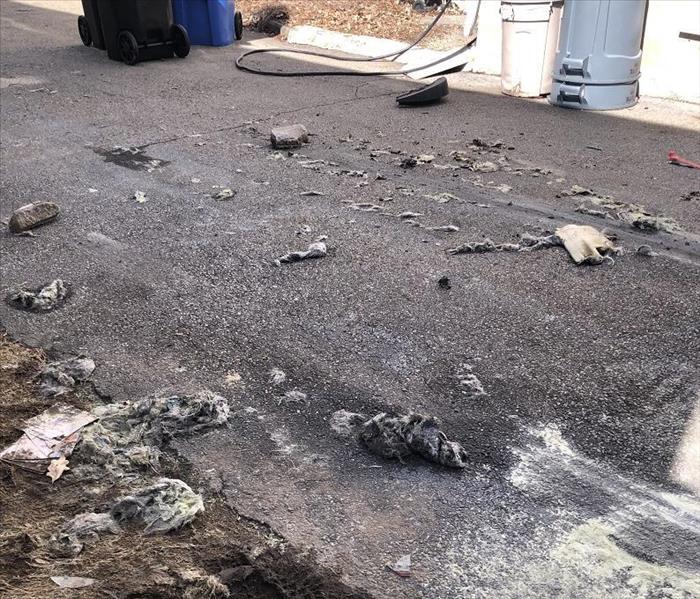 What the driveway looked like before it was cleaned and pressure washed.
What the driveway looked like before it was cleaned and pressure washed.
The next door neighbor saw the smoke coming from the parked car in the driveway. He immediately called the fire department and then informed his neighbor of the situation. Paul, the car owner was charging his electric vehicle when it caught on fire. The fire department extinguished the flames but the fire caused a mess. The vehicle was charred and ruined, the driveway was filled with debris from the fire and a white powdery substance could be seen on the driveway. The owner’s second floor condo had a foul odor and there was light soot throughout the unit. The owner of the first floor complained of the odor and she had heavy soot in her unit.
The fire department suggested Paul call SERVPRO of to help him with the cleanup. Paul called SERVPRO of Cambridge/Belmont (617) 864 -7378 to assist him with the cleanup. The SERVPRO crew went right to work. They cleaned and pressure washed the driveway, installed Air Scrubbers with charcoal filters to eliminate the odors and cleaned the entire structure and contents of the condominium.
If you have a fire or have soot damage, please call SERVPRO of Cambridge/Belmont to assist you.
Fire In Cambridge MA
8/2/2018 (Permalink)
 Building with huge flames and thick black smoke
Building with huge flames and thick black smoke
On July 20, 2018 there was a three alarm fire with heavy smoke and soot that took place in Cambridge, MA at 2:30pm. The fire made serval road closures for most of the afternoon in order to contain the fire. It took a total of 150 firefighters to put out this massive blaze.
When firefighters were on scene the front was still in tact but as more investigating went on firefighters discovered that there was a heavy fire that was started in the basement of the building in the back. It took many hours for firefighters to put out the fire and left the business and some of the businesses around it with almost nothing.
After the fire took place, the owner called SERVPRO Cambridge/Belmont (617-864-7378)
to asses the damage that had been done and begin restoration of the business. SERVPRO Cambridge/Belmont (617-864-7378) is available 24/7, seven days a week to answer their customers needs. When there is a tragedy that occurs we are the people to get business’ back on their feet “Like it never even happened.”
5 Different Sources of House Fires and How to Prevent A Fire in Your Home
8/2/2018 (Permalink)
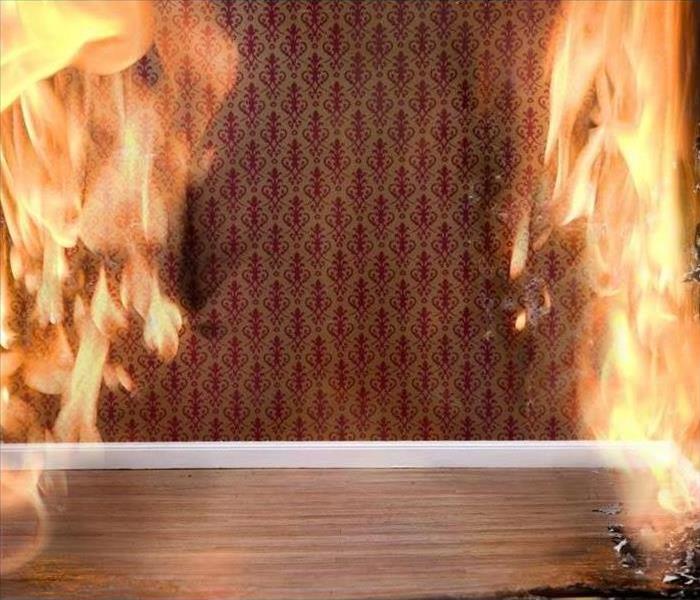 Fire that started in a Wall
Fire that started in a Wall
Wiring and Outlets
- Make sure all electrical cords are checked throughout your home for signs of fraying and make sure all frayed wires are replaced.
- Do not cover cords with item such as rugs or blankets.
- Be aware of the capacity that your home can handle in its electrical system.
- Make sure to understand the difference between surge protectors and power strips. Surge protectors help protect electronic devices.
Kitchens
- Make sure there is a fire extinguishers readily available and make sure one knows how to use it in case of emergencies.
- Keeping your stove clean is another way to prevent a house fire. Grease on a stove or in an oven can lead to a fire the next time it is used, if not cleaned properly.
Dryers
- Installing a dryer not properly could lead to a house fire when it is used for the first time. Make sure to read the instructions thoroughly to prevent a fire from happening though the vent.
- Make sure your dryer is cleaned regularly
- After each load of laundry is done make sure the lint is taken out from the previous load.
Other Sources of Heating
- Space heaters are known for starting house fires when left on too long, or on when nobody is in your home.
- Make sure your space heater is far enough away from all furniture or anything else that can get too warm and catch on fire.
Chimneys
- If there in a chimney that is located in your house make sure it is inspected annually. Have a professional clean or repair your chimney as needed.
- Make sure to use wood only.
The 4 Steps to Cleaning Your Home After a Fire
8/1/2018 (Permalink)
- Step One: Emergency Contact
- SERVPRO of Cambridge/Belmont (617-864- 7378) offers a 24/7 emergency service number that can be contacted when a fire occurs in your home. This is a very important feature when trying to find a company to clean after something tragic like a fire or flood happens. Why do you need to start a fire damage restoration damage right away? You want to be able to prevent anymore damage from happening to your property.
- Step Two: Assessment
- The next step in the fire damage restoration is where the company will assess the extent of the damage that has happened to your property. This is important because it gives the company a plan of action and the company will then be able to give you and accurate quote for the cost. Most importantly, to make sure your home looks “like it never happened”.
- Step Three: Clean Up
- The main step, is where a SERVPRO of Cambridge/Belmont 617-864-7378 fire damage restoration service will being the clean up process of the damage. They will clean away smoke, dust, and soot from your surfaces and any underlying issues that come about. After a fire often you will find that your property looks dark, stained and charred. The first job your fire damage restoration company will do is clean up all the damage and get your property looking “like it never happened”. During this fire damage restoration process, SERVPRO of Cambridge/Belmont 617-864-7378 will also ensure to remove any odors that can linger after the smoke has been in the room. This might involve carpet cleaning and will often need to address adjacent rooms as well as those directly affected by fire damage.
- Step Four: Restore and Renovation
- After all is cleaned up next begins the next and final step, finally getting your property back to the way it was.
The most common causes of fire in the workplace
7/17/2018 (Permalink)
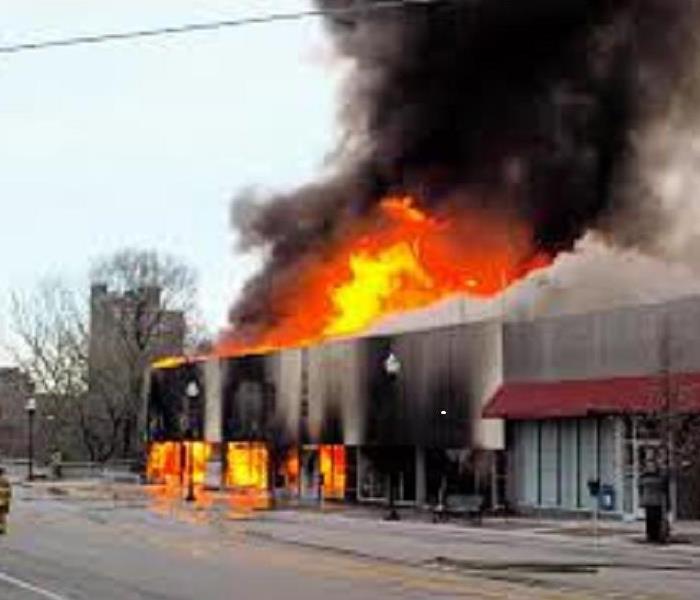 Commercial Building on fire
Commercial Building on fire
Most Common Causes of Fire in the Workplace
Electrical Fires
Over 25% of all fires are linked to a malfunction of either a piece of electrical equipment, wiring, or both. Electricity is a common source of ignition for major fires. One way to avoid problems with electrical fires is to establish an electrical safety program.
All employees should be thoroughly familiar with the safety procedures for their particular jobs. To maximize his or her own safety, an employee should always use tools and equipment properly. Extension cords must be inspected before use, and those found questionable, removed from service and properly tagged. Damage or inadequate maintenance can cause equipment to deteriorate, resulting in unsafe conditions.
Flammable and Combustible Materials
There are thousands of chemicals in use in the modern American workplace. One of the most prevalent dangers of these chemicals is their flammability or combustibility. Improper handling of flammable materials brings a great risk of fire. When a flammable liquid is spilled, vapors begin to form immediately. It is the vapors that will ignite, and which pose the greater danger.
Flammable liquid spill cleanup should begin immediately. Vapors will continue to build until the liquid is removed, and they can be ignited by a variety of sources in the average workplace. The best way to avoid fire caused by these materials is to follow all OSHA guidelines when dealing with flammables.
Human Error
The most common reason for a sprinkler system failure is human error. Often times the water supply was turned off at the time of the fire. The success of fire prevention strategies depends primarily on pre-planning, preparation, equipment quality, and the readiness of personnel. Employees and loss prevention practitioners must be knowledgeable about the proper use of extinguishers. If the wrong extinguisher is used, a fire may become more serious.
General Negligence
Negligence is another common cause of fire in the workplace. It’s slightly different from fires caused by human error. Negligence occurs when an employee does not follow established procedures and knowingly undertakes an activity that is a potential fire hazard.
Fire caused by negligence can be the result of:
- Hot surfaces too close to heating equipment
- Open flame that’s not properly located or protected
- Not following smoking restrictions or careless disposal of butts, ashes, and matches
Good common sense, self awareness, and close adherence to policy are a great way to avoid fires caused by general negligence. Posting fire safety signs in common areas is another way to keep fire safety at top of mind.
Arson
The premise behind arson prevention, like other prevention programs, is to address the opportunity to commit the crime. Arsonists, like other criminals, typically prefer to start fires in locations that are secluded or hidden. Prevention programs often suggest improving the surveillance in these areas by lighting the area, removing visual obstructions to natural observation, and moving the targets such as dumpsters.
Prevent the Common Causes of Fire in the Workplace
Fire prevention should be considered part of everyone’s job. Employees must help to keep the work area clutter-free and safe from fire hazards. Also, make sure extreme care is taken when working with chemicals such as flammable solvents, gasoline, gases, and fuels. Of course, the best prevention for fire is education and proper training.
If your company, please call SERVPRO of Cambridge/Belmont (617) 864-7378 to assist you with the cleanup.
Causes & prevention of Commercial Fires
5/8/2018 (Permalink)
 Commercial Building after the fire
Commercial Building after the fire
Most Common Causes of Commercial Building Fires
- Cooking Fires
29.3% of nonresidential fires from 2013 were cooking related. In fact, 1 in 4 office building fires were related to cooking equipment. These fires tend to account for less damage, but are easily preventable with fire protection systems such as alarms and fire extinguishers.
- Intentional
The second most common cause of nonresidential fires was intentionally started. This accounts for almost 10% of fires, and tends to cause the most damage. Intentional fires also result in more civilian injuries and deaths. Unlike cooking and heating fires, it's most common for intentional fires to be started between 3pm and midnight.
A few common locations in your building to be aware of include:
- Bathrooms
- Trash bins
- Garages
- Open areas like a lawn or field
- Careless Acts and Human Error
9.2% of commercial fires were unintentional results of careless acts. This is somewhat of an 'other' category. A few examples of careless acts that result in fires:
- Accidentally leaving space heaters or other heat producing equipment on
- Carelessly discarded cigarette butts igniting fires
- Plugging too many things into the same extension cord
- Heating Fires
Heating fires account for 9% of all nonresidential building fires. Central heating units, fireplaces, water heaters, and other heating appliances and systems should be regularly inspected to prevent fires. It's important to move any flammable materials and furniture away from heat sources, especially in the winter months when the heat is turned on.
How to Prevent a Nonresidential Fire
Run through the items below to see how protected your business is from a fire emergency. There might be something you're missing that could save you thousands of dollars in fire damage and loss.
Fire Suppression and Protection System in Place
- Fire extinguishers - The top cause of commercial building fires is cooking fires, and thankfully, most of these fires are small and contained. A fire extinguisher placed near the kitchen area can give employees the power to stop a small cooking fire from spreading. Make sure your employees are trained in using a few extinguishers. Read this if you're unsure whether or not your fire extinguishers are still in working condition.
- Fire alarms - This may sound obvious, but fire alarms are easily overlooked or left with dead batteries because they're not properly maintained. Not only is a fire alarm system required, but it can save lives and property from damage.
- Commercial fire sprinkler system - A sprinkler system can squelch a potentially deadly fire. The NFPA has no record of a fire killing more than 2 people in a building that was completely sprinkled. Having only 1 or 2 fire sprinkler heads can contain the majority of fires.
Testing and Maintenance
So you have all of the necessary fire protection systems in place. But how well maintained and up-to-date are they? Do you have expired fire extinguishers? Are you following the legal state requirements for getting these systems tested regularly? Make sure you check the local fire code to see what is required of businesses, and set up regular inspections and maintenance.
Install a Commercial Alarm System
No one likes to think that there are people who would intentionally start a fire on their property. Unfortunately, this is a scenario that you need to be prepared for. Invest in a security alarm system that will detect any suspicious activity in the evening hours when the building is most at risk. Keeping the area well-lit at night, or installing motion sensor lights outside, can deter criminal activity.
If you do have a fire please call SERVPRO of Cambridge/Belmont (617) 864-7378
Smoke Alarms, when to replace
4/2/2018 (Permalink)
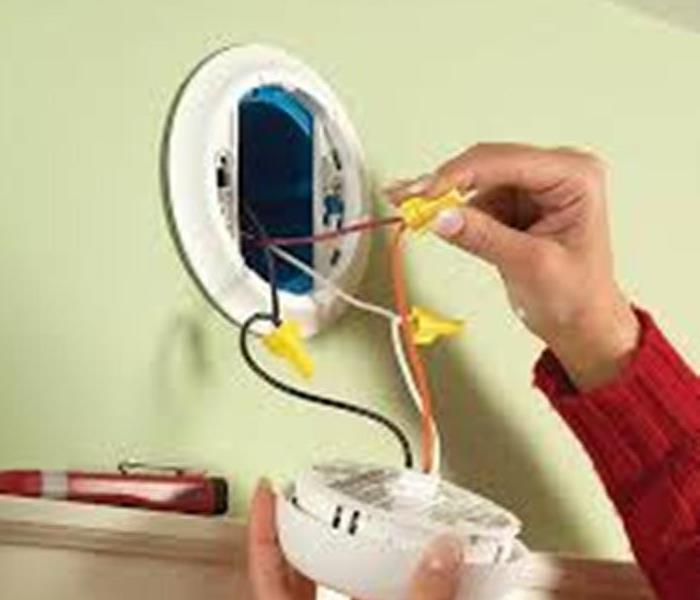 Hard wired smoke detector
Hard wired smoke detector
Your detectors are overdue for replacement, according to the National Fire Protection Association, which recommends that you replace detectors when they’re 10 years old. Top-rated security system experts we interviewed say that, over time, dust gathers inside smoke detectors, desensitizing the sensors. And even if a detector hasn’t reached the 10-year mark, replace it if it chirps after you’ve replaced the battery or if the alarm doesn’t sound when you perform the recommended monthly testing. Experts recommend replacing all connected detectors at the same time, even if some are working. Smoke detectors are an essential part of a fire-prevention strategy, so you should replace yours as soon as possible. In a 2014 report, the NFPA said three of every five home-fire deaths resulted from fires in homes with no smoke alarms or with none that worked.
You can replace hard-wired detectors yourself, if you can reach them and if you have sufficient skill to replace a light fixture. (Be sure to first turn off electricity at the breaker box.) Otherwise, you can hire an electrician or an alarm service company to do the job. The cost can vary widely, depending on where you live and on the type and number of units to be replaced, where they’re placed and the condition of the wires. Service providers we contacted charge a wide range of prices, from $35 to $40 per detector, plus a $50 for service charge, to $135 to $155 per detector.
Meanwhile, here are some NFPA safety tips:
- Install smoke alarms inside and outside each bedroom and sleeping area. Install alarms on every level of the home, including the basement. (Large homes may need extra smoke alarms.)
- Interconnected smoke alarms – whether hardwired or wireless – are best because when one is activated, they all sound.
- Test all smoke alarms at least once a month. Simply press the test button to be sure the alarm works.
- Ionization smoke alarms are quicker to warn of flaming fires. Photoelectric alarms are quicker to warn of smoldering fires. It’s best to use some of both types.
- A smoke alarm should be on the ceiling or high on a wall. Install wall-mounted alarms should no more than 12 inches from the ceiling to the top of the alarm.
- Don’t install smoke alarms near windows, doors, or ducts where drafts might interfere with their operation. To reduce false alarms, keep alarms at least 10 feet from a stove.
- Make sure everyone in your home knows how to respond if they hear a smoke alarm.
- Follow manufacturer’s instructions for cleaning.
If your smoke alarm goes off, immediately leave your home, follow your emergency plan & call SERVPRO of Cambridge/Belmont (617) 864-7378 to assist you assist you with the smoke cleanup.
The top ten causes of household fires.
8/11/2017 (Permalink)
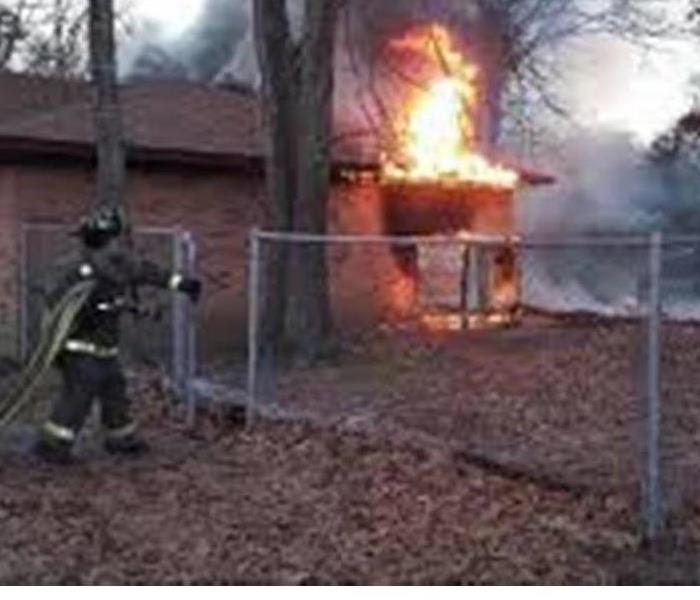 Fires can be prevented if you use common sense.
Fires can be prevented if you use common sense.
A house can easily catch fire from the misuse of appliances to smoking in bedrooms. You can take measures to avoid fire in your home and ensure the safety of your family. Below are some of the most common causes of household fires, and some tips to take precautions.
- Cooking Equipment
Pots and pans can overheat and cause a fire very easily if the person cooking gets distracted and leaves cooking unattended. Always stay in the room, or ask someone to watch your food, when cooking on hotplates.
- Heating
Keep portable heaters at least 5’ away from anything that could easily catch fire such as furniture, curtains, laundry, clothes and even you. If you have a furnace, get it inspected once a year to make sure it is working to safety standards.
- Smoking in bedrooms
Bedrooms are best to be kept off limits for smoking. A cigarette that is not put out properly can cause a flame, as the butt may stay alit for a few hours. It could burst into flames if it came into contact with flammable materials, such as furniture. Did you know that fires started in the bedroom or lounge make up 73% of all house fire fatalities?
- Electrical Equipment
An electrical appliance, such as a toaster can start a fire if it is faulty or has a frayed cord. A power point that is overloaded with double adapter plugs can cause a fire from an overuse of electricity. A power point extension cord can also be a fire hazard if not used appropriately. Double check the appliances and power points in your home.
- Candles
Candles look and smell pretty, but if left unattended they can cause a room to easily burst into flames. Keep candles away from any obviously flammable items such as books and tissue boxes. Always blow a candle out before leaving a room. Did you know that in Perth last year 34 house fires started as a result of candles?²
- Curious Children
Kids can cause a fire out of curiosity, to see what would happen if they set fire to an object. Keep any matches or lighters out of reach of children, to avoid any curiosity turned disaster. Install a smoke alarm in your child’s room and practice a home escape plan with your children and family in case there was a fire. Inform your kids the importance of knowing their address knowing their address and if they needed to, call 911.
- Faulty Wiring
Homes with inadequate wiring can cause fires from electrical hazards. Some signs to see if you’ve bad wiring are: 1) Lights dim if you use another appliance; 2) For an appliance to work, you have to disconnect another; 3) Fuses blow or trip the circuit frequently. Have a licensed electrician come and inspect your house, or contact your landlord if you have any of the above occurrences.
- Barbeques
Barbeques are great for an outdoor meal, but should always be used away from the home, tablecloths or any plants and tree branches. Keep BBQs regularly maintained and cleaned with soapy water and clean any removable parts. Check the gas bottle for any leaks before you use it each time.
- Flammable Liquids
If you have any flammable liquids in the home or garage such as petrol, kerosene or ethylated spirits, keep them away from heat sources and check the label before storing. Be careful when pouring these liquids.
- Lighting
Lamp shades and light fittings can build up heat if they are very close to light globes. Check around the house to make sure. Lamp bases can become a hazard if they are able to be knocked over easily, and so should be removed if they are. Check that down lights are insulated from wood paneling or ceiling timbers.
The above tips are a good guide to avoiding a fire in your home. If you do have a fire and need assistance with the cleanup, please call SERVPRO of Cambridge/Belmont (617) 864-7378
Deodorizing contents after a fire
8/10/2017 (Permalink)
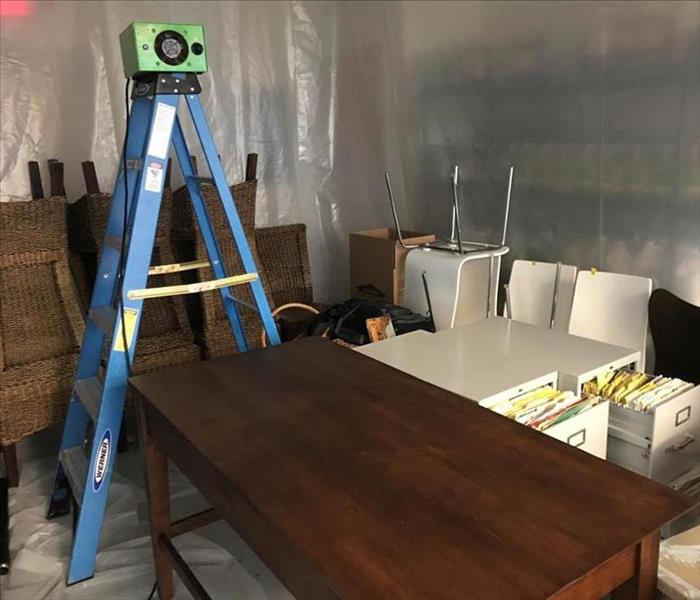 SERVPRO constructed an ozone chamber to deodorize contents.
SERVPRO constructed an ozone chamber to deodorize contents.
The contents of a house that have had a fire usually need to be deodorized to eliminate lingering odors. SERVPRO of Cambridge/Belmont uses an ozone machine to eliminate these odors. Ozone, (O3), sometimes called "activated oxygen", contains three atoms of oxygen rather than the two atoms we normally breathe. Ozone is the second most powerful sterilizer in the world and can be used to destroy bacteria, viruses and odors. Interestingly ozone occurs quite readily in nature, most often as a result of lightning strikes that occur during thunderstorms. In fact the "fresh, clean, spring rain" smells that we notice after a storm most often results from nature's creation of ozone. However, we are probably most familiar with ozone from reading about the "ozone layer" that circles the planet above the earth's atmosphere. Here ozone is created by the sun's ultra-violet rays. This serves to protect us from the ultra-violet radiation.
How does ozone work?
The third oxygen atom of ozone makes it extremely reactive. This atom readily attaches itself to other odor molecules. When contaminants such as odors, bacteria or viruses make contact with ozone, their chemical structure is changed to less odorous compounds. As more ozone attacks the remaining compounds, the odor is eventually destroyed. This process is called oxidation. Ozone essentially reverts back to oxygen after it is used. This makes it a very environmentally friendly oxidant.
If your home or business has had a fire, please call SERVPRO of Cambridge/Belmont (617) 864-7378 to assist you.
Lightning rods can protect your house from lightning damage.
8/3/2017 (Permalink)
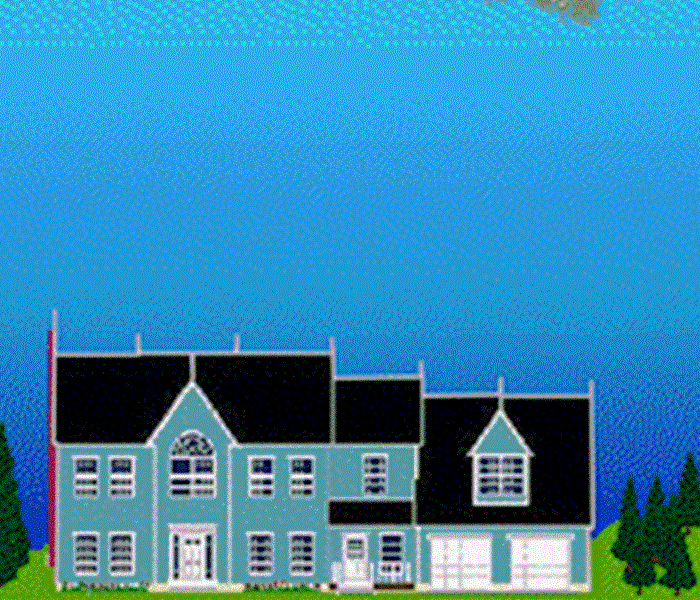 Lightning rods on a dwelling
Lightning rods on a dwelling
Lightning rods (and the accompanying protection system) are designed to protect a house or building from a direct lightning strike and, in particular, a lightning-initiated fire. Note that lightning protection systems do not prevent lightning from striking the structure, but rather intercept a lightning strike, provide a conductive path for the harmful electrical discharge to follow (the appropriate UL-listed copper or aluminum cable), and disperse the energy safely into the ground (grounding network). It's very important that these components be properly connected (bonded) to minimize the chances for any sparks or side flashes. While lightning rods help protect a structure from a direct lightning strike, a complete lightning protection system is needed to help prevent harmful electrical surges and possible fires caused by lightning entering a structure via wires and pipes. A complete system also includes electrical surge protection devices for incoming power, data, and communication lines; and surge protection devices for vulnerable appliances. Lightning protection may also be needed for gas piping. Any lightning protection system should follow the national safety standards and requirements of the Lightning Protection Institute, National Fire Protection Association, and Underwriters Laboratories. If lightning causes a fire in your house, please call SERVPRO of Cambridge/Belmont (617) 864-7378 to assist you.
Fire safety and prevention tips
8/3/2017 (Permalink)
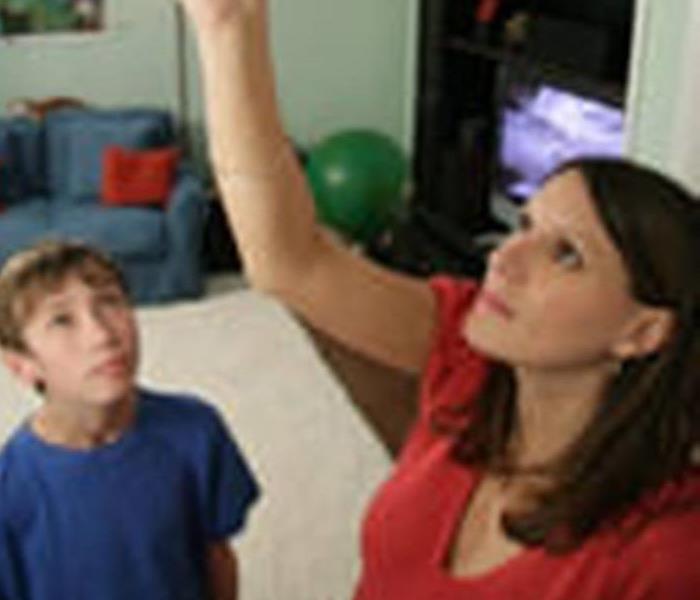 A smoke alarm should be placed on every floor
A smoke alarm should be placed on every floor
BEFORE A FIRE
The following are things you can do to protect yourself, your family, and your property in the event of a
Fire:
SMOKE ALARMS AND CARBON MONOXIDE DETECTORS
- Install smoke alarms. Properly working smoke alarms decrease your chances of dying in a fire by half.
- Place smoke alarms on every level of your residence, including the basement.
- Install a working carbon monoxide detector in the common area of the bedrooms.
- Test and clean smoke alarms once a month and replace batteries at least once a year. Replace smoke alarms once every 10 years.
COOKING SAFETY
- Never leave cooking unattended.
- Always wear short or tight-fitting sleeves when you cook.
- Keep towels, pot holders and curtains away from flames
- Never use the range or oven to heat your home.
ESCAPING THE FIRE
- Have an escape plan. Review escape routes with your family.
- Make sure windows are not nailed or painted shut.
- Teach family members to stay low to the floor, where the air is safer, when escaping from a fire.
- In high-rise, never lock fire exits or doorways, halls or stairways. Never prop stairway or other fire doors open.
HEATING SOURCE
- Place space heaters at least three feet away from flammable/combustible materials.
- Use only the type of fuel designated for your space heater.
MATCHES/LIGHTERS AND SMOKING
- Keep matches/lighters away from children.
- Never smoke in bed or when drowsy or medicated.
- If you must smoke, do it responsibly.
ELECTRICAL WIRING
- Inspect extension cords for frayed or exposed wires or loose plugs
- Make sure outlets have cover plates and no exposed wiring.
- Make sure wiring does not run under rugs, over nails, or across high traffic areas.
- Do not overload extension cords or outlets.
ASK THE FIRE DEPARTMENT TO INSPECT YOUR HOME FOR FIRE SAFETY AND
PREVENTION
DURING A FIRE
If your clothes catch on fire, you should:
- Stop, drop, and roll until the fire is extinguished.
DO NOT PANIC
- Do not assume someone else already called the fire department get out of the house then call the Fire Department.
ESCAPE A FIRE
- Check closed doors with the back of your hand to feel for heat before you open them.
- If the door is hot do not open it. Find a second way out, such as a window. If you cannot escape through a window, hang a white sheet outside the window to alert firefighters to your presence.
- Stuff the cracks around the door with towels, rags, bedding or tape and cover vents to keep smoke out.
- If there is a phone in the room where you are trapped, call the fire department again and tell them exactly where you are.
- If the door is cold slowly open it and ensure that fire and/or smoke is not blocking your escape
Route. If your escape route is blocked, shut the door and use another escape route.
- If clear, leave immediately and close the door behind you. Be prepared to crawl.
AFTER A FIRE
- Once you are out of the building, STAY OUT! Do not go back inside for any reason.
- If you are with a burn victim or are a burn victim yourself call 911, cool and cover your burns until emergency units arrive.
- If you are a tenant contact the landlord.
- Tell the fire department if you know of anyone trapped in the building.
- Only enter when the fire department tells you it is safe to do so.
Puffbacks cause soot damage
8/3/2017 (Permalink)
 Heavy soot caused by a puffback
Heavy soot caused by a puffback
If your home has an oil burning furnace, there are several dangers to be aware of. Any furnace can experience a puff back, while puff backs are more common with oil systems, a furnace puff back can also occur with forced air, gas and hot water heating systems. A puff back in a furnace is a volatile explosion that occurs inside your furnace. The result of this explosion is fire and smoke being spewed out from your furnace. This fire, smoke and soot will damage your homes building materials and contents. This explosion will not be lethal, but can cause thousands of dollars in costly repairs and damage restoration, and can also cause health problems for you and your family. The explosions are caused by a buildup of vapor inside your furnace. This build up can occur with furnaces which have not been maintained properly. Parts sometimes need to be replaced, and bi yearly cleaning of your furnace and heating system will help prevent puff backs. Conducting a yearly exam of your heating system or having a professional check your heating system yearly will often times fully prevent a puff back from ever occurring.
If you have experience a puff back avoids doing the following: Try to clean or wash away soot residue yourself. This soot and smoke residue needs special cleaning methods, as it spreads easily. Soot stains can also set very quickly, making soot damage especially trick to clean if you should do it wrong. Soot is black carbon, and black carbon will stain extremely quickly when mixed with water and common household liquid cleaners. Should you attempt to remove the soot yourself and end up staining something with soot in your home, a professional cleaner may be required to remove the stain. Should you have soot damage, you should leave it to a professional to clean. SERVPRO professionals trained in soot damage have special cleaners and cleaning methods to use to remove your soot and soot damage. Use furniture or walk on carpeting affected by the fire or puff back. Do not use furniture that has been exposed to heat, soot or smoke. You can cause further damage to your furniture, until it is professionally cleaned and restored. Do not turn on any electronics such as computer, stereo's, and TV's until you have had them checked for soot damaged. Computers can be especially vulnerable and ruined as soon as they are turned on if soot has made its way inside them. This soot also contains a corrosive element, which will damage home's building materials, and contents such as your electronics, furniture, clothing and more. Not only can this soot damage your property, it can also affect the health of your loved ones by causing respiratory problems. This soot will often have a very terrible odor that will swiftly travel throughout the home, and will need to be cleaned and deodorized in order to remove the offensive odor from your home. If the soot and smoke travels through your home's duct work, it will need to be cleaned and deodorized as well. You also need to have a professional check your furnace following a puff back, to avoid further incidents. You may have a faulty part or an oil burner that may need replacing. If the problem is ignored, it can cause repeated and long lasting effects to your home. Should you have experienced a furnace puff back, you should SERVPRO of Cambridge/Belmont (617) 864-7378 to help with the clean up.
Fire Damage
3/28/2017 (Permalink)
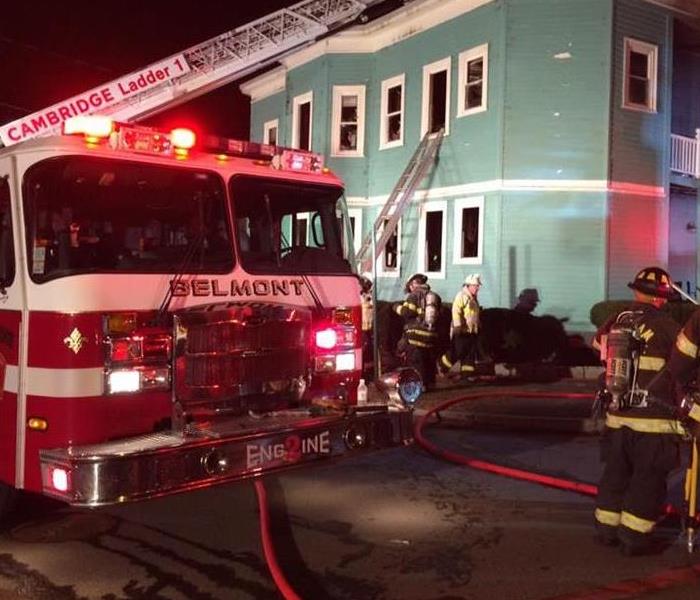 Recent fire in Belmont
Recent fire in Belmont
City of cambridge Smoke and Soot Cleanup
Smoke and soot is very invasive and can penetrate various cavities within your home, causing hidden damage and odor. Our smoke damage expertise and experience allows us to inspect and accurately assess the extent of the damage to develop a comprehensive plan of action.
Smoke and soot facts:
- Hot smoke migrates to cooler areas and upper levels of a structure.
- Smoke flows around plumbing systems, seeping through the holes used by pipes to go from floor to floor.
- The type of smoke may greatly affect the restoration process.
Different Types of Smoke
There are two different types of smoke–wet and dry. As a result, there are different types of soot residue after a fire. Before restoration begins, SERVPRO of Cambridge/Belmont will test the soot to determine which type of smoke damage occurred. The cleaning procedures will then be based on the information identified during pretesting. Here is some additional information:
Wet Smoke – Plastic and Rubber
- Low heat, smoldering, pungent odor, sticky, smeary. Smoke webs are more difficult to clean.
Dry Smoke – Paper and Wood
- Fast burning, high temperatures, heat rises therefore smoke rises.
Protein Fire Residue – Produced by evaporation of material rather than from a fire
- Virtually invisible, discolors paints and varnishes, extreme pungent odor.
Our Fire Damage Restoration Services
Since each smoke and fire damage situation is a little different, each one requires a unique solution tailored for the specific conditions. We have the equipment, expertise, and experience to restore your fire and smoke damage. We will also treat your family with empathy and respect and your property with care.
Have Questions about Fire, Smoke, or Soot Damage?
Call Us Today – (617) 864-7378






 24/7 Emergency Service
24/7 Emergency Service






































